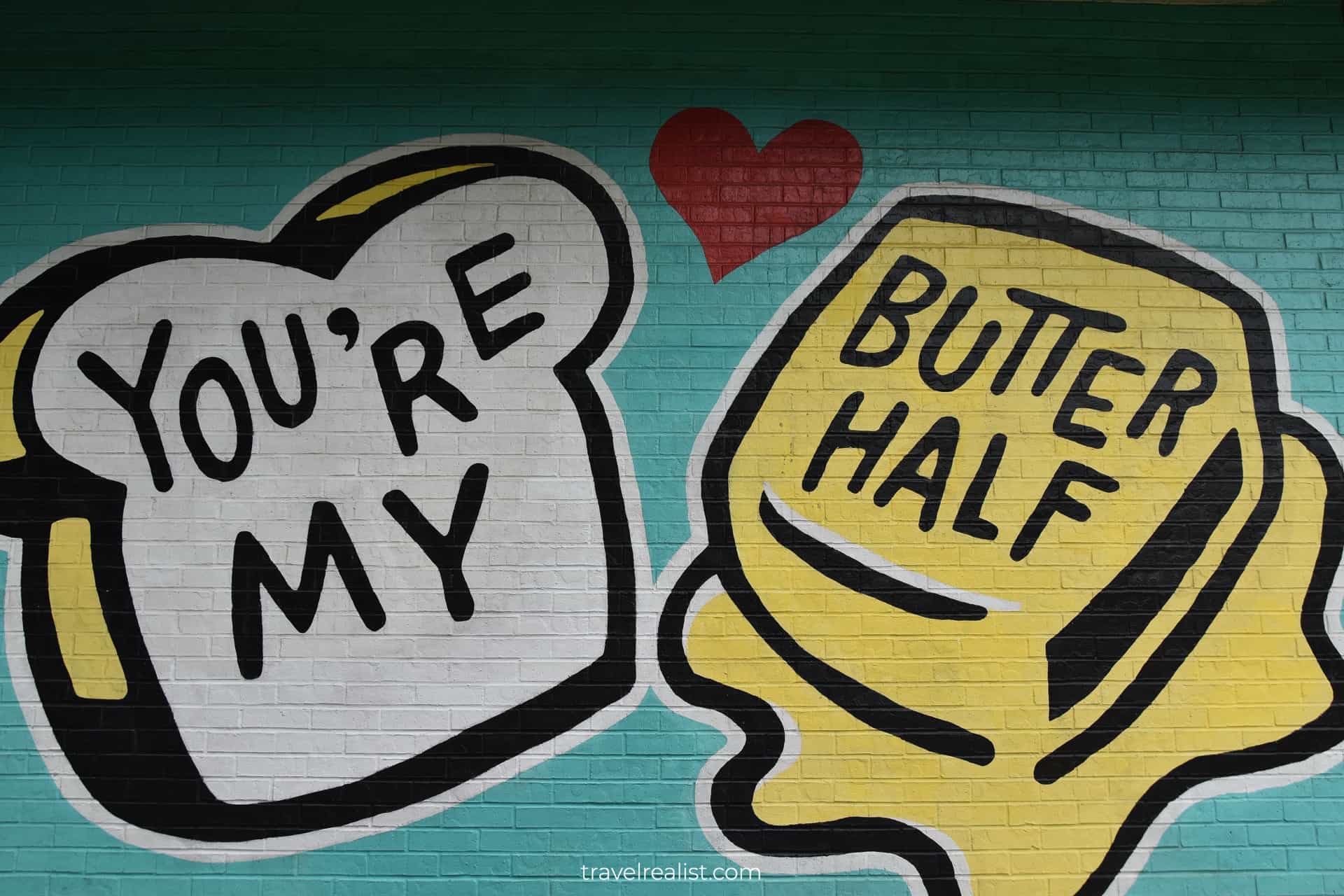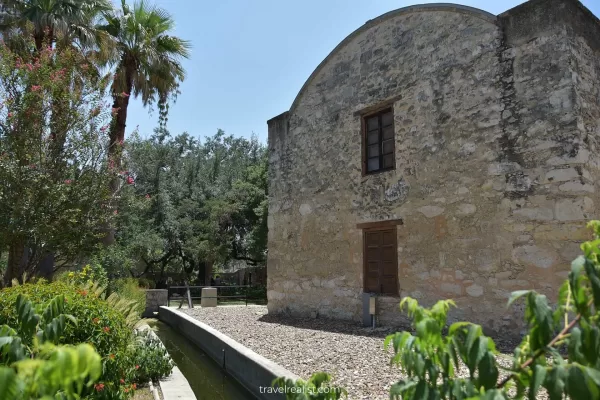Hillwood Estate: A Royal Art Collection in Washington, D.C.
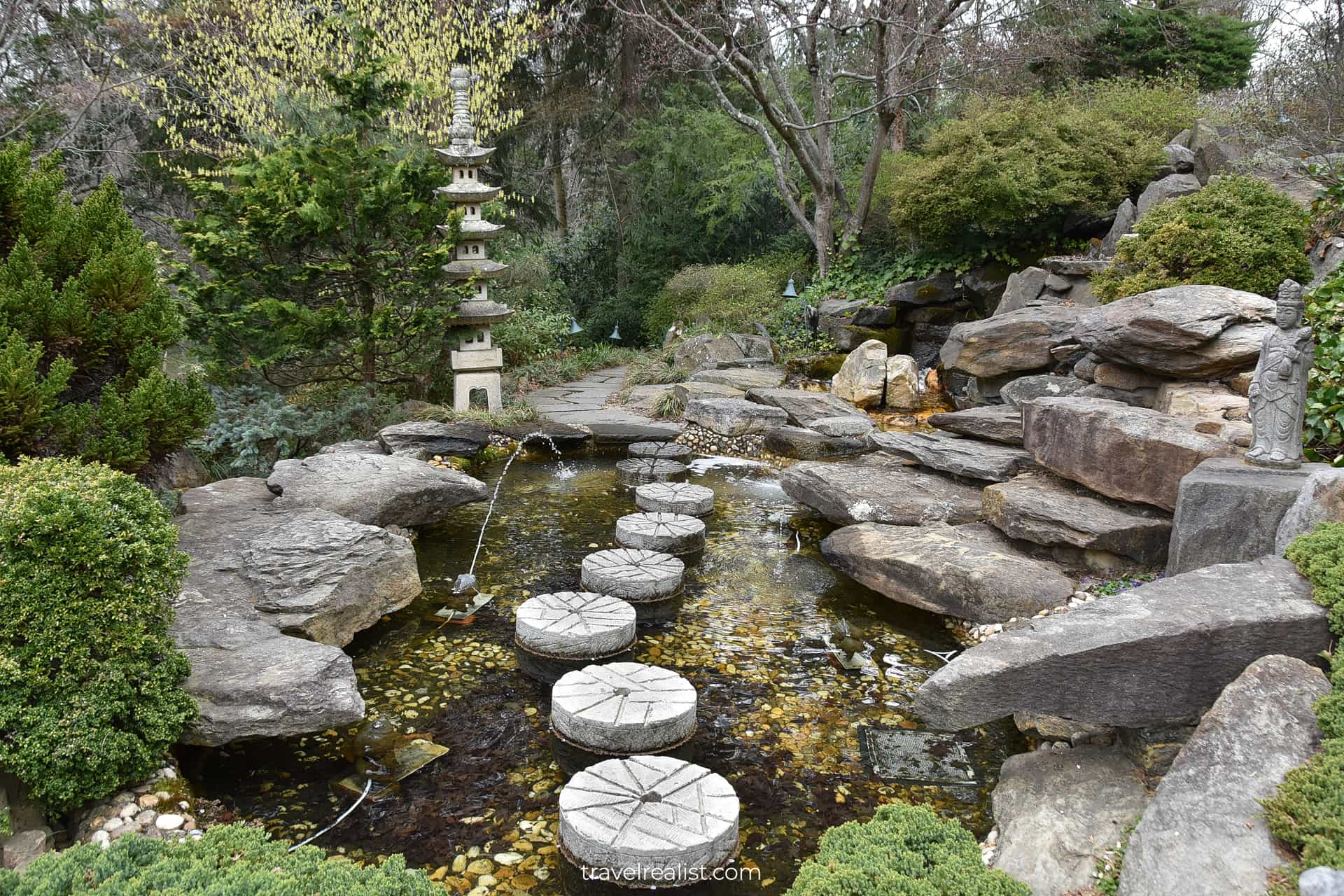
This realistic Hillwood Estate Washington, D.C. Guide helps you plan your next adventure in this house museum and gardens.
Hillwood Estate, Museum & Gardens is a beautiful museum in the capital of the United States. It houses an impressive art collection. There are items from both Russian and French Royal Families.
- Sights & Places of Interest
- 1. Hillwood Estate House Museum
- 1.1. Entry Hall
- 1.2. Russian Porcelain Room
- 1.3. French Drawing Room
- 1.4. Pavilion
- 1.5. Icon Room
- 1.6. First Floor Library
- 1.7. Dining Room
- 1.8. Breakfast Room
- 1.9. French Porcelain Room
- 1.10. Kitchen
- 1.11. Staircase
- 1.12. Second Floor Hall
- 1.13. Post Bedroom Suite
- 1.14. Adam Bedroom
- 1.15. Second Floor Library
- 1.16. English Bedroom
- 1.17. Russian Sacred Arts Gallery
- 2. Hillwood Estate Gardens
- 3. Sights near Hillwood Estate
- 1. Hillwood Estate House Museum
- Getting to Hillwood Estate
- Where to Stay near Hillwood Estate
- Entrance Requirements & Passes
- Takeaways: Hillwood Estate Washington, D.C.
This post includes affiliate links that will earn us commission if you make a purchase via these links.
Hillwood Estate became a museum thanks to Marjorie Merriweather Post. Ms. Post was an American businesswoman, philanthropist, and collector. Her interests included French and Russian Imperial art.
Hillwood collection has some 17,000 items. Ms. Post acquired a handful of them herself by traveling to France and Soviet Russia. Hillwood was Ms. Post’s home since the 1950s. It became a museum in 1976.
Hillwood Estate in Washington, D.C. is in the shadow of the Post other residence, Mar-o-Lago in Florida. The latter estate became infamous over the past 40 years thanks to its new owner.
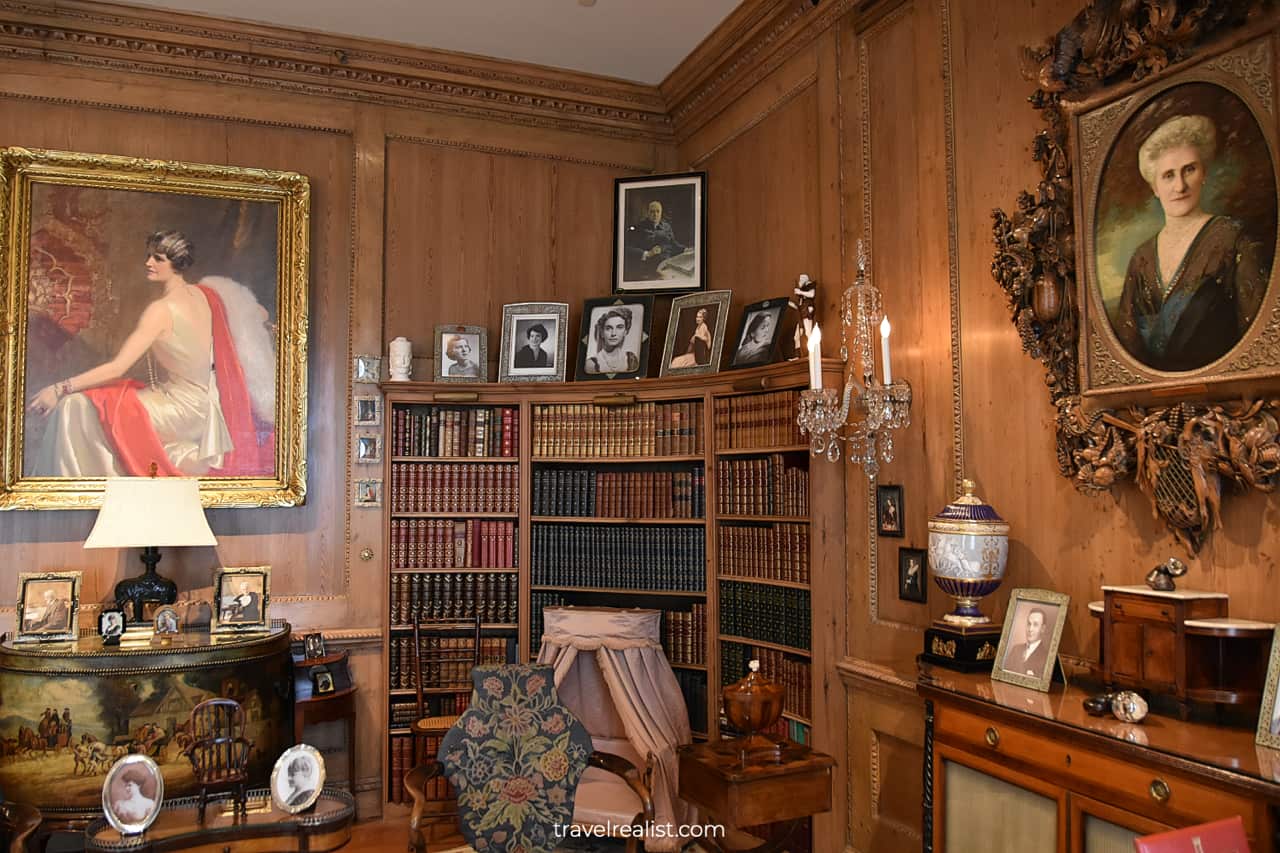
Sights & Places of Interest
Hillwood Estate is a combination of an art gallery and a house museum under one roof. Art lovers will find Hillwood worthwhile thanks to the famous Fabergé eggs.
There are exquisite jewelry pieces throughout the mansion. Some of them belonged to the members of the Royal Families. But jewelry is only one part of Hillwood. The Estate has plenty of other historic items.
You will find a comprehensive collection of French and Russian Porcelain. Russian Orthodox items are on display in one of the galleries. Full length paintings and smaller portraits are all throughout the house.
The rooms of the mansion have furniture pieces and household items that belonged to Ms. Post. In this way, Hillwood is also a house museum. It displays the life of a wealthy collector during mid 20th century.
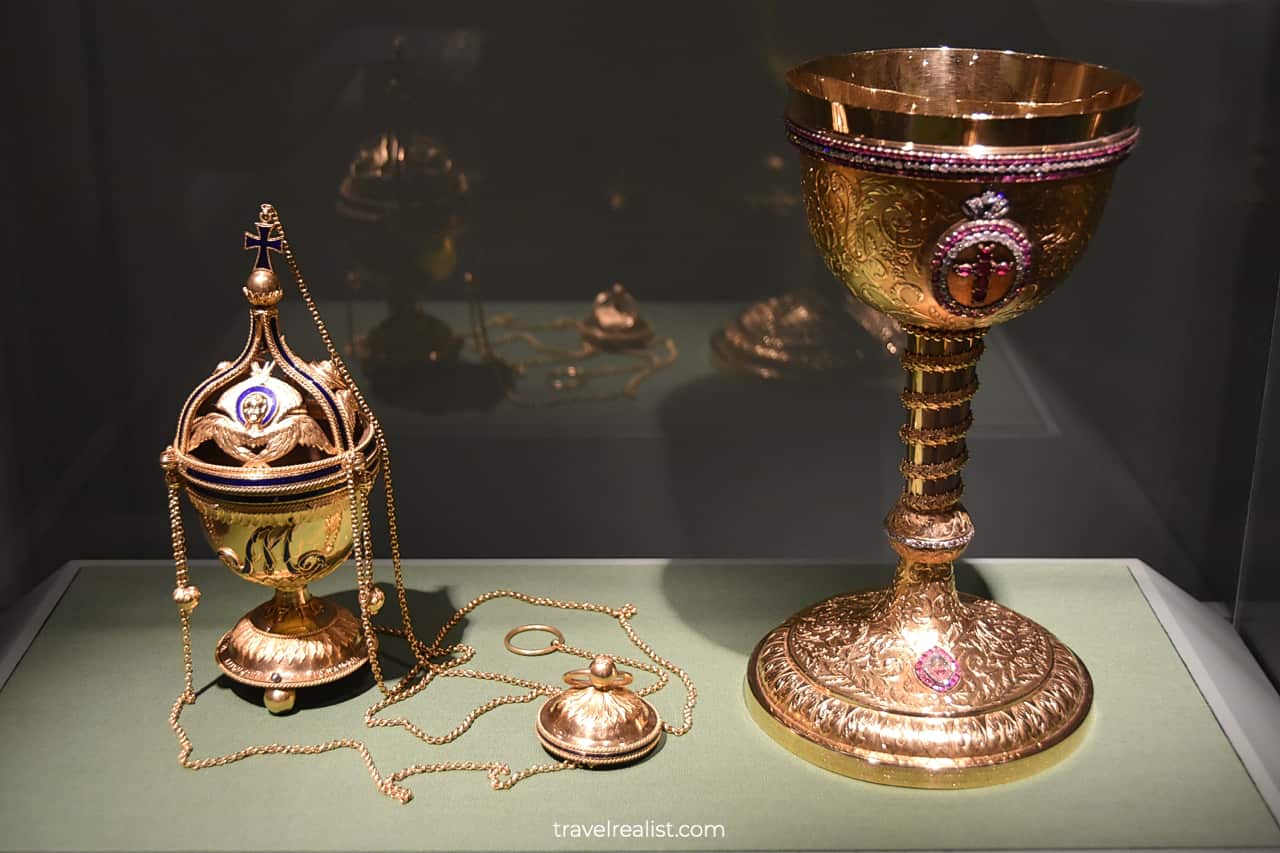
1. Hillwood Estate House Museum
The house museum is the crown jewel of Hillwood Estate. It is a good idea to start your exploration by visiting this 36-room mansion.
The Georgian Colonial house dates back to the 1920s. It carried the name Arbremont back then. The mansion underwent major renovations in the 1950s to provide display space for the collection.
The following sections of this Hillwood Estate Washington, D.C. Guide cover the main rooms of the mansion. You could learn what items you should not miss during your visit.
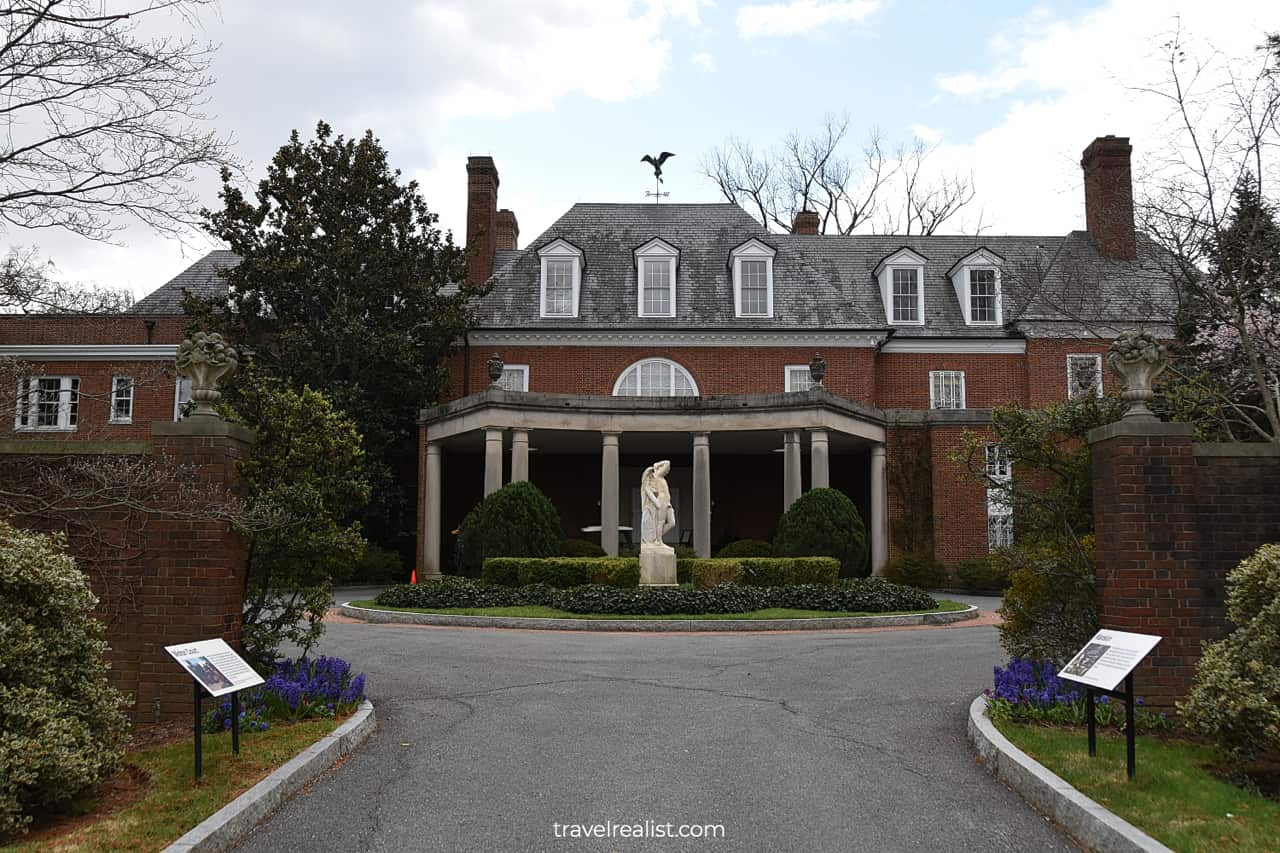
1.1. Entry Hall
You will find yourself in the Entry Hall as soon as you enter the Hillwood Estate House Museum. This spacious room gives you a good idea of what to expect from the rest of the house.
There are at least a couple of portrait paintings on nearly every wall of this room. These portraits show Russian Emperors, Royal Family members, and prominent generals.
You will see lots of other portrait paintings throughout the house museum. The number of art pieces could rival some of the halls at the National Gallery of Art.
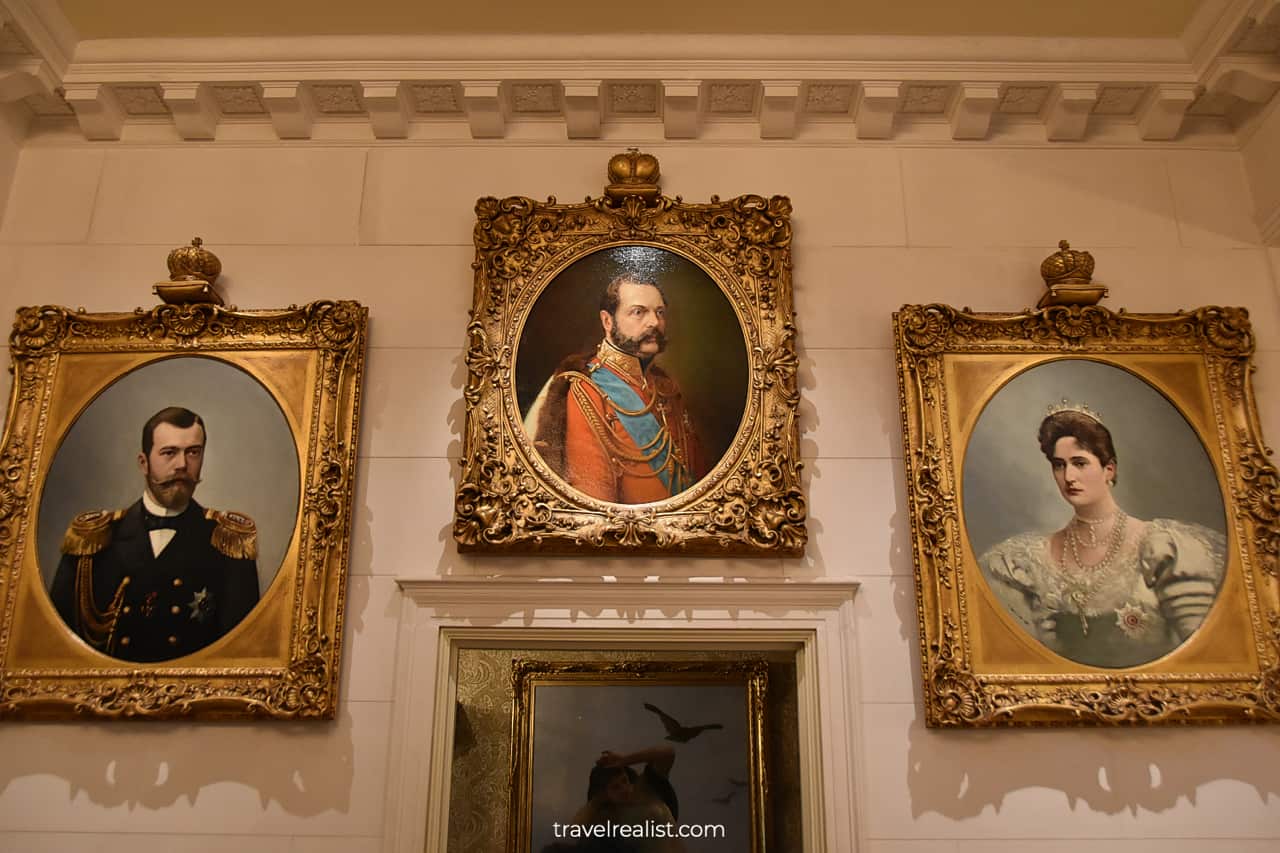
1.2. Russian Porcelain Room
Turn right from the Entry Hall. You will enter the Russian Porcelain Room. This small room is a gateway to an entire wing of the house. Its octagon shape also provides space for display cabinets.
Each of the cabinets houses a few serving plates and glasses. Nearly all of them date back to the 18th century. The patterns on the plates include coats of arms of the Royal Family and different Orders.
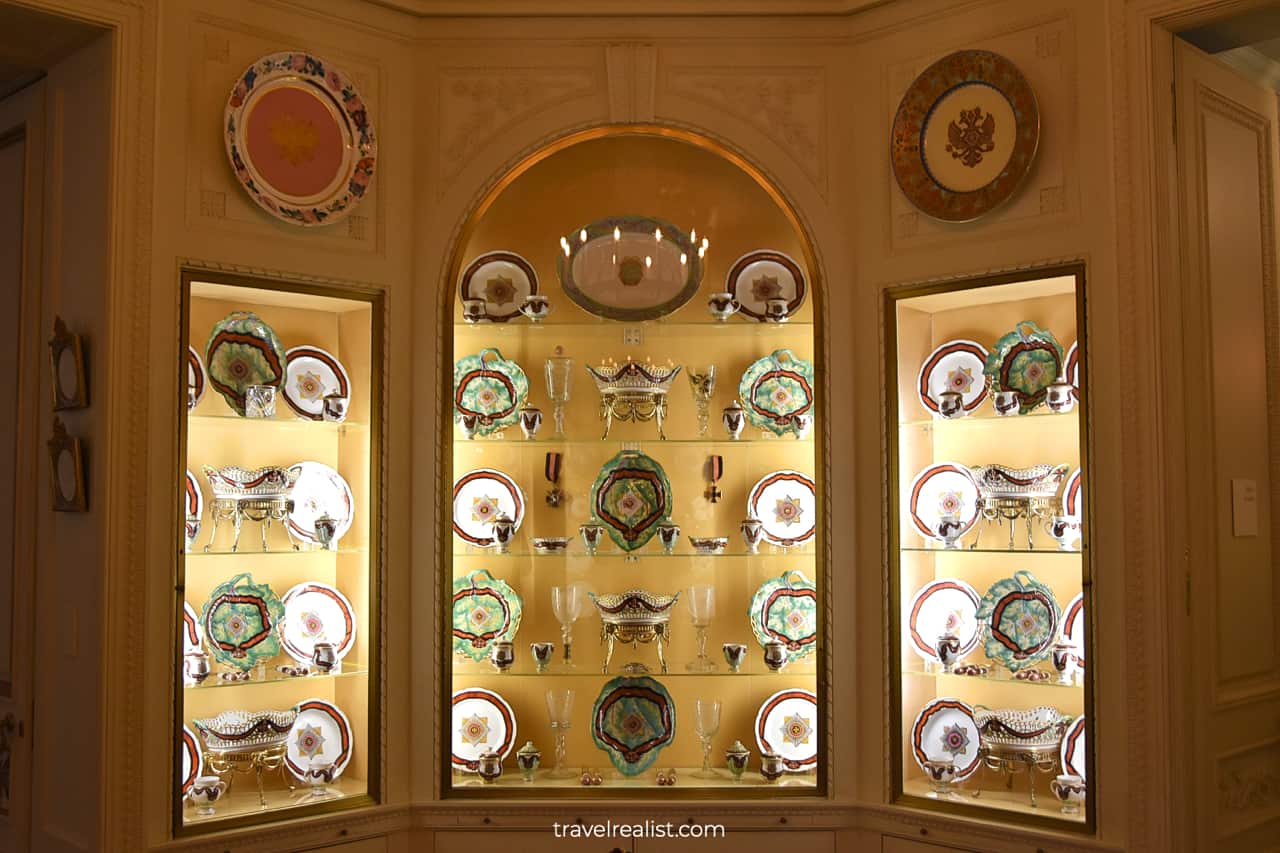
You will enjoy this room most if you like porcelain dinnerware sets. But this room has another notable item if tableware is not your cup of tea.
Take a look at the floor. Its middle section has a double-headed eagle pattern. It is a large coat of arms of the House of Romanov. Such a detailed pattern on the hardwood floor is a piece of art in itself.
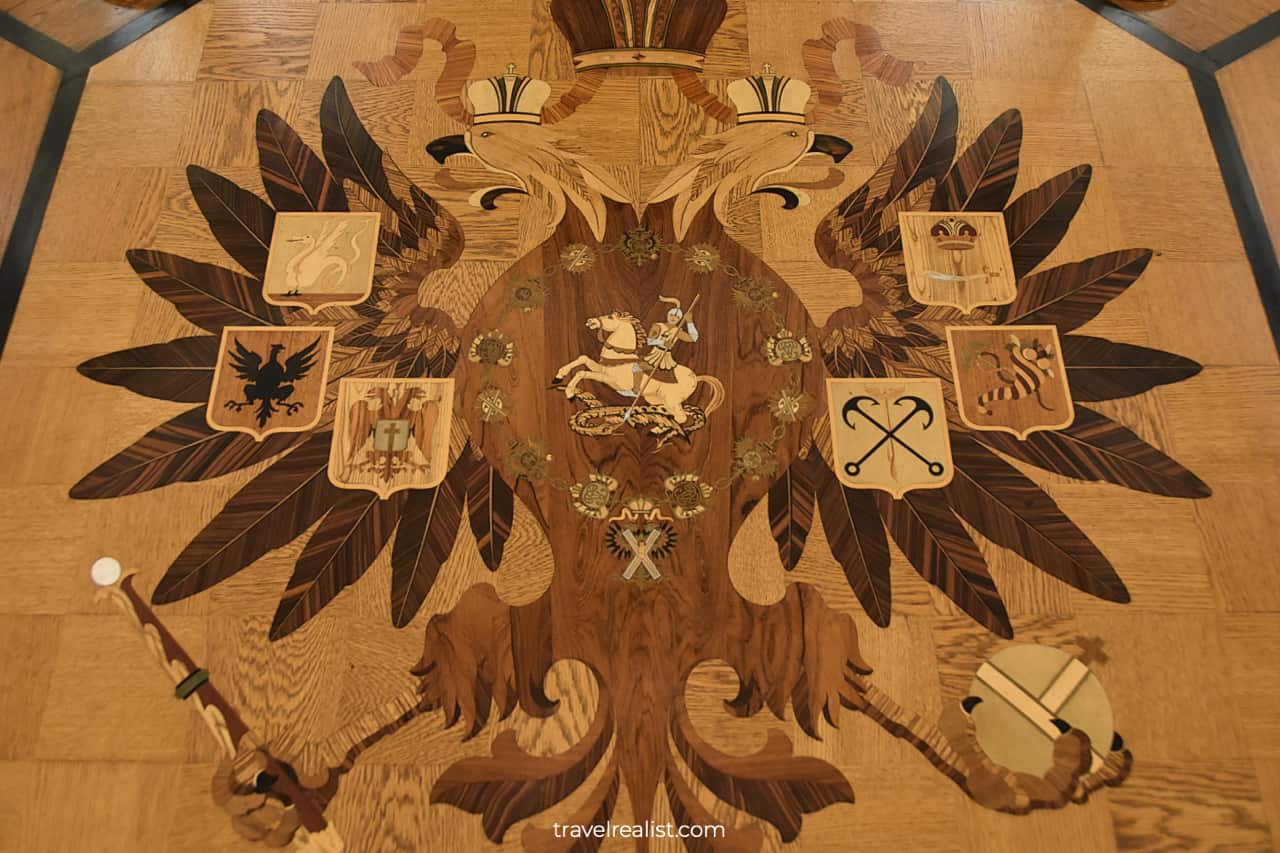
1.3. French Drawing Room
You should head to the French Drawing Room next. This room has it all. You will find portrait paintings, porcelain sets, tapestries, and upholstered chairs there.
If this list sounds too short for you, look for gold boxes, vases, sculptures, and lighting fixtures. It is easy to spend half an hour studying the beautiful items in the French Drawing Room.
As the name of the room suggests, a handful of items are of French origin. You could go back in time to the court of King Louis XVI in the 18th century. Hillwood helps you to travel through time and borders.
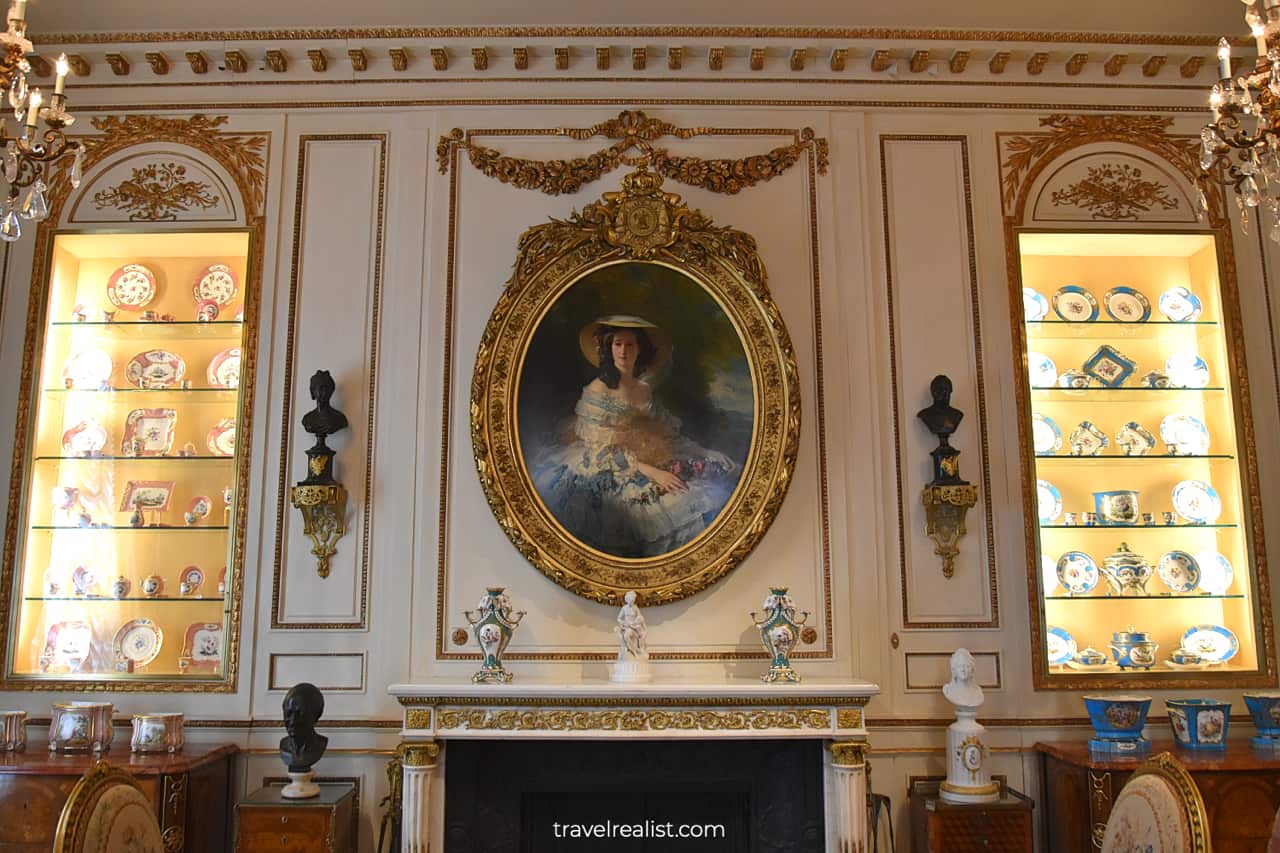
1.4. Pavilion
You need to head back to the Russian Porcelain Room next. Take a walk through a narrow hallway to the Pavilion. This room is a large entertainment place. It was as a home movie theater in a historic setting.
If you do not fancy a movie, there is a grand piano near the window. And, of course, there are lots of historic art pieces in the Pavilion. Take a look at the enormous paintings, vases, and busts.
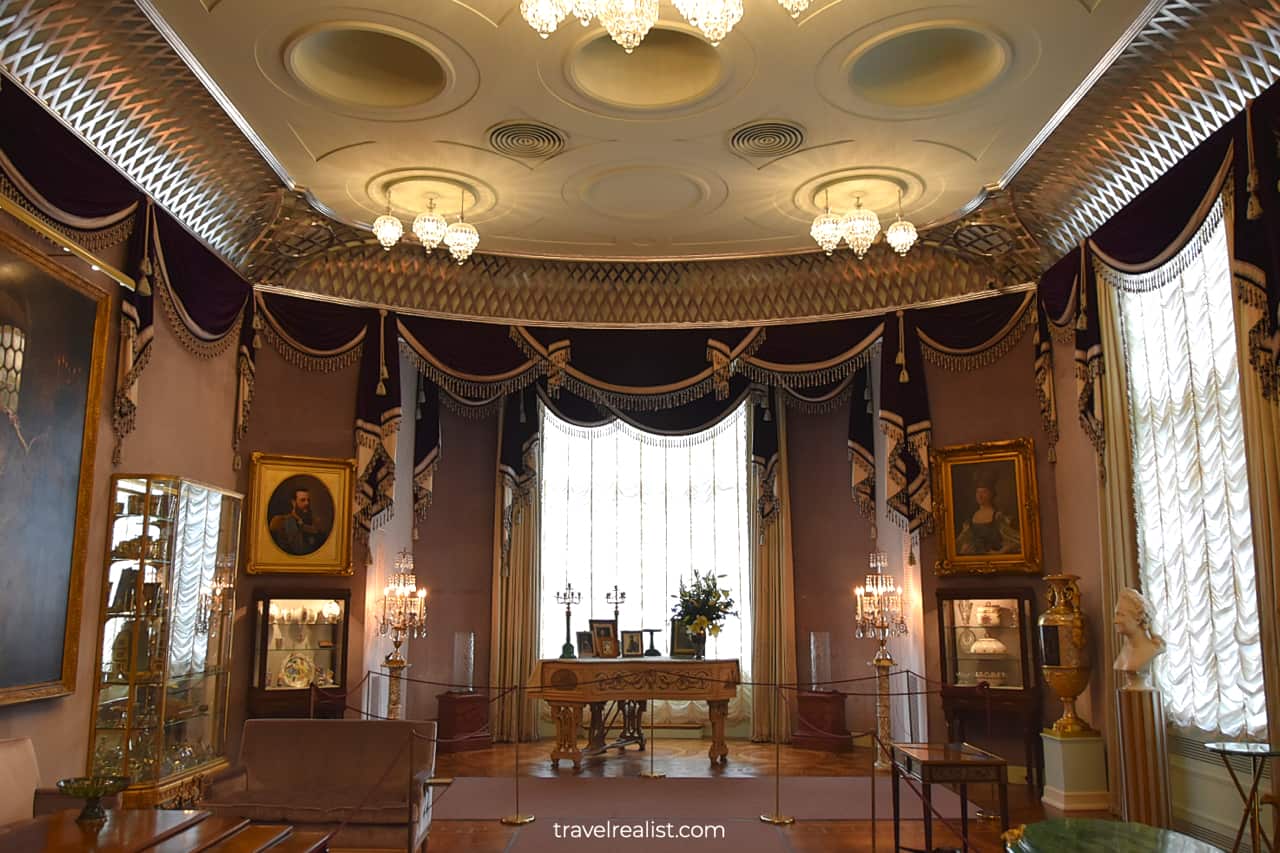
If you look back towards the entrance of this room, you will notice an interior balcony. This feature was common in the mansions of that time. You could find a similar balcony at Casa Loma in Toronto, Ontario.
The balcony at Hillwood Estate in Washington, D.C. helped start the projector for the movie screening. You could also fit in a few more spectators without disturbing the guests in the main seating area.
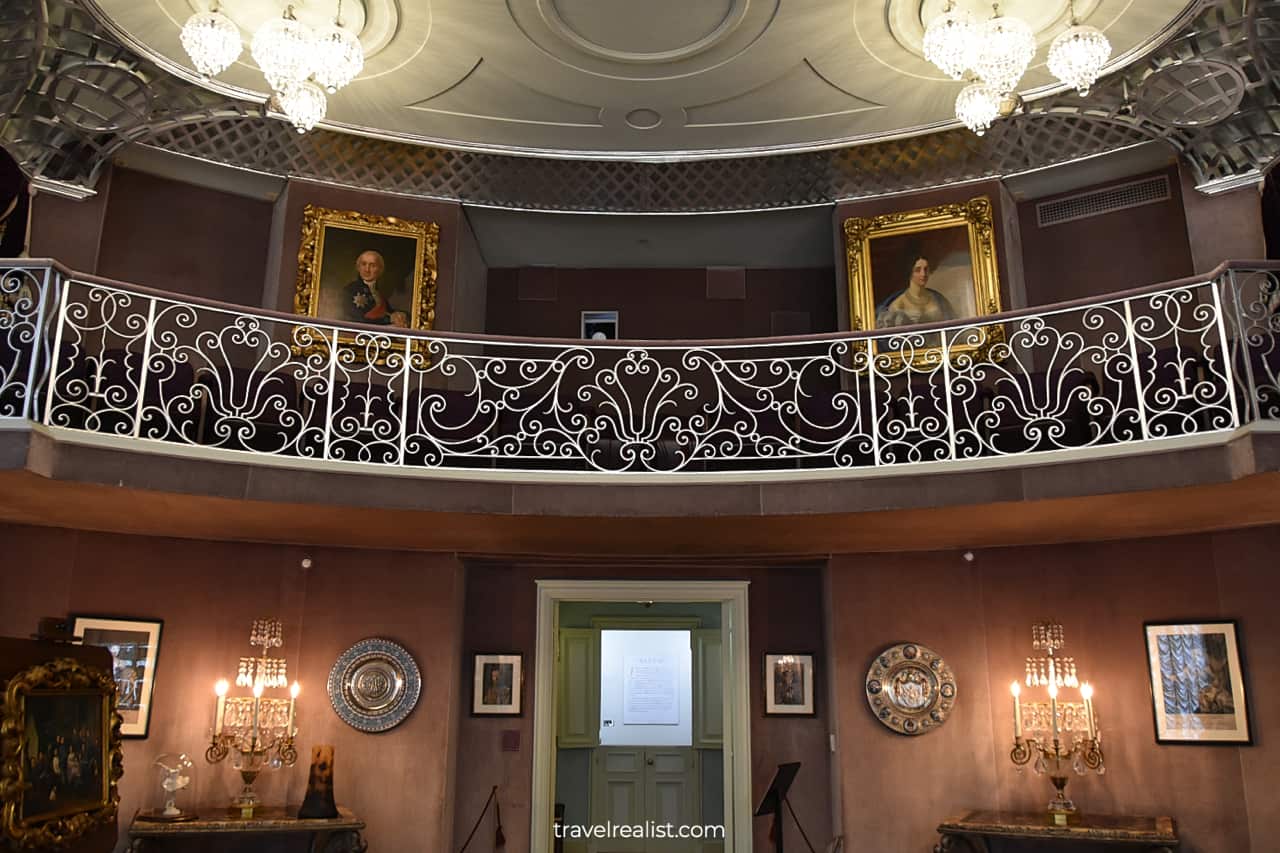
1.5. Icon Room
Just like the French Drawing Room, the Pavilion does not connect to other rooms at Hillwood. You would pass through the Russian Porcelain Room for the third time. But you will enter the Icon Room this time.
This room is a reason why most visitors come to Hillwood Estate in Washington, D.C. It houses the most treasured pieces of the museum collection.
Two Fabergé eggs are on display in the center of the Icon Room. These jeweled Easter eggs are made of gold. Diamonds, pearls, and other precious stones complete each egg.
The Fabergé eggs rightfully steal the show. But there are a handful of other pieces to see in the Icon Room. Check out the medals with inlaid diamonds. And do not skip the carved wooden display cabinets.
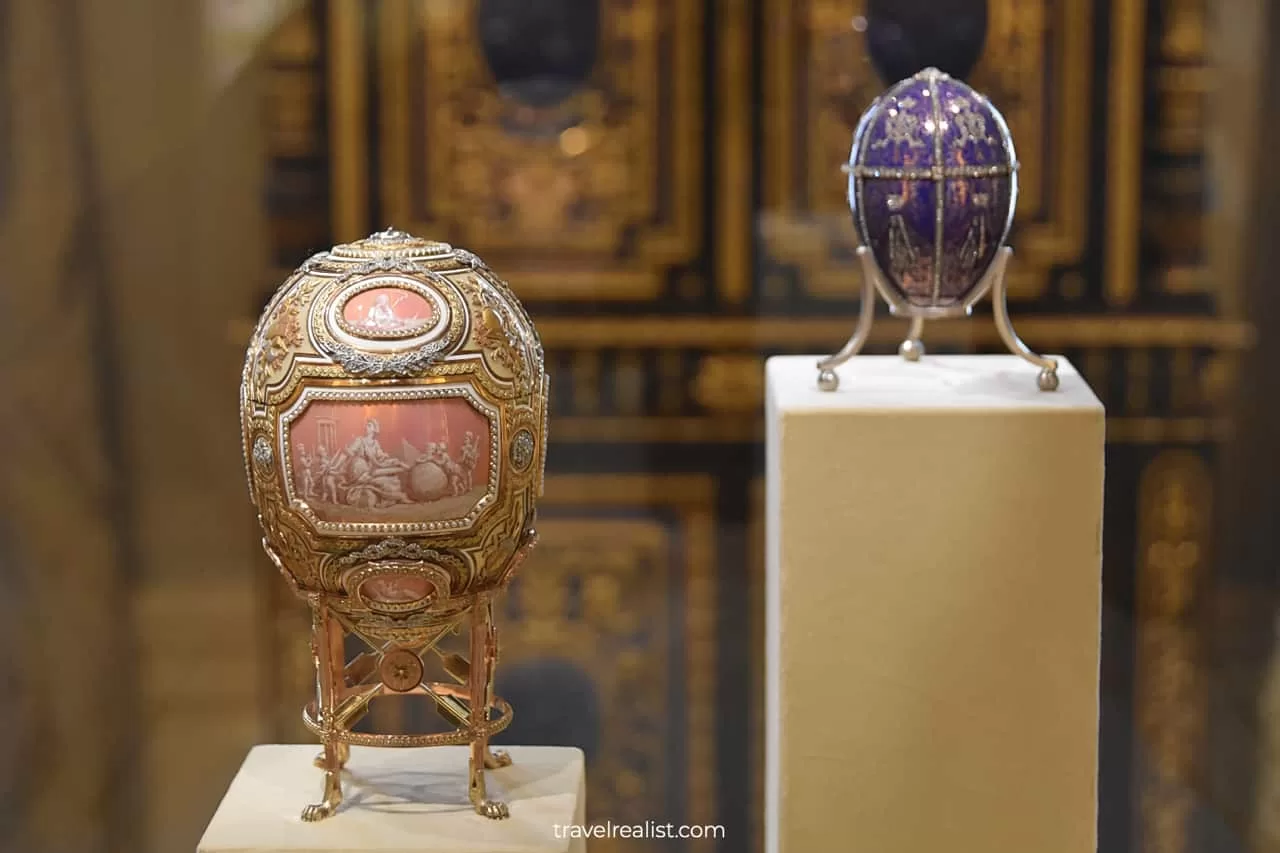
1.6. First Floor Library
The Icon Room spares you another trip to the Russian Porcelain Room. You could go directly to the First Floor Library. This room is next to the Main Hall. It is a cozy reading place.
Yet, there are lots of items on display. A replica of Sea Cloud is a centerpiece of the First Floor Library. This four-masted yacht once belonged to Ms. Post. The portraits of family members are on the walls.
No library is complete without a bookcase. The Library at Hillwood is no different. Its beautifully arranged books resemble the Haas-Lilienthal House in San Francisco, California.
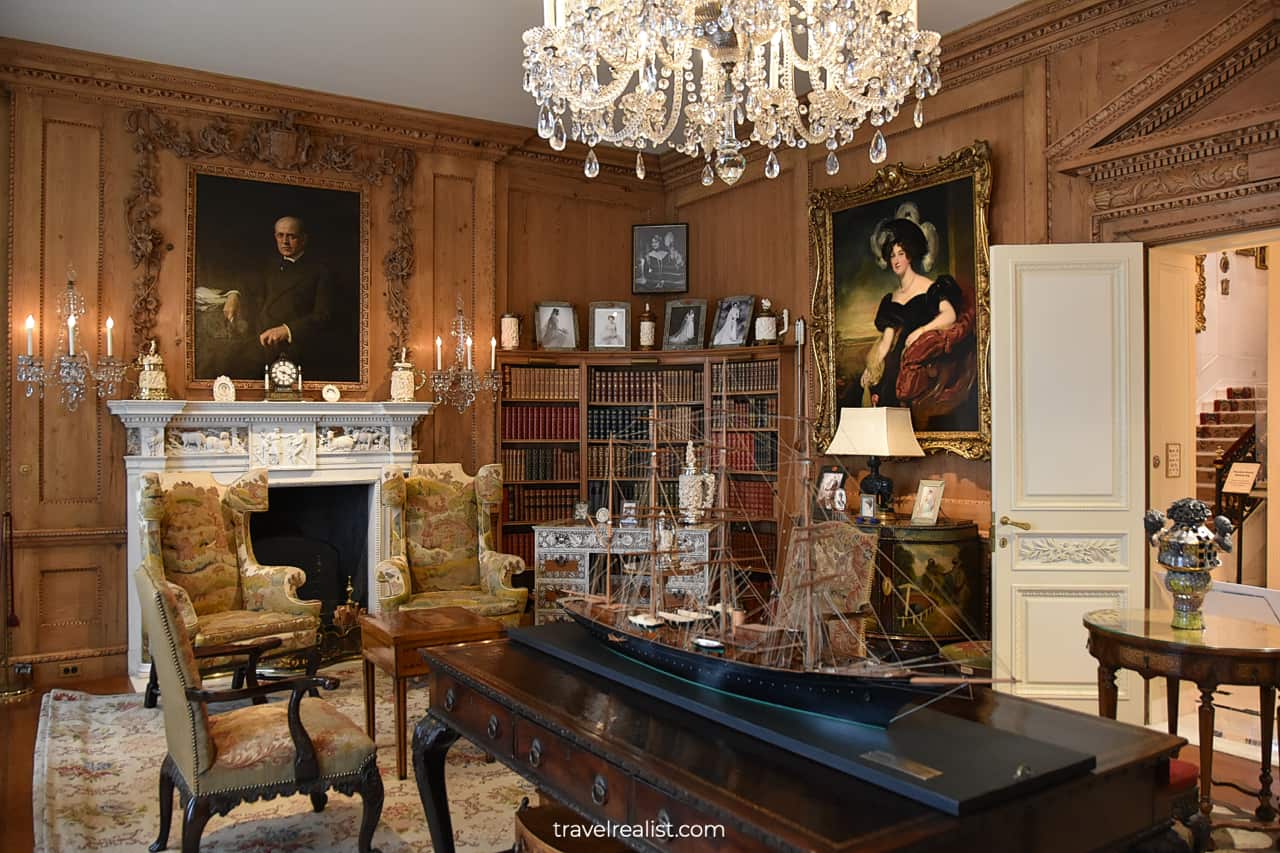
1.7. Dining Room
The Library connects to the Icon Room, Main Hall, Dining Room, and Porch. You already explored the first two rooms. The Porch door remains closed for visitors.
This leaves the Dining Room as the next part of Hillwood Estate for you to visit. This room is one of the biggest in the house. It could only complete with the Pavilion by area.
A stone dining table sits 12 people comfortably. There is a new dinner set on display in the Dining Room about every quarter. Large Dutch paintings and a French carpet complete the picture.
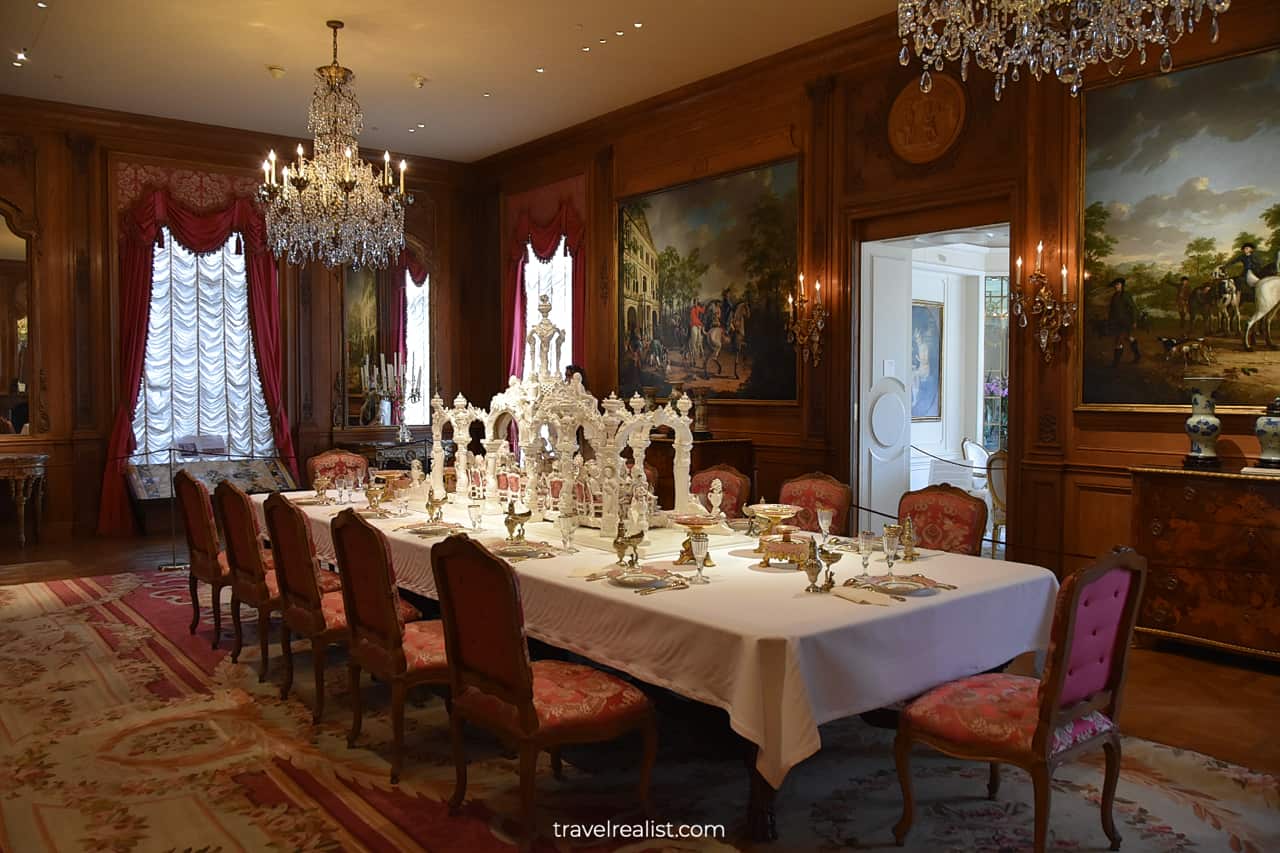
1.8. Breakfast Room
The Dining Room is the sole gateway to another room at Hillwood Estate in Washington, D.C. The Breakfast Room is a small space with a different look and feel.
You will find a cozy four-person table in this room. Another table set will likely be on display during your visit. The floor to ceiling windows reveal the Lunar Lawn just outside of the mansion.
Blooming flowers from the Greenhouse give life to the Breakfast Room. You could imagine how the conversations were flowing at breakfast or afternoon tea.
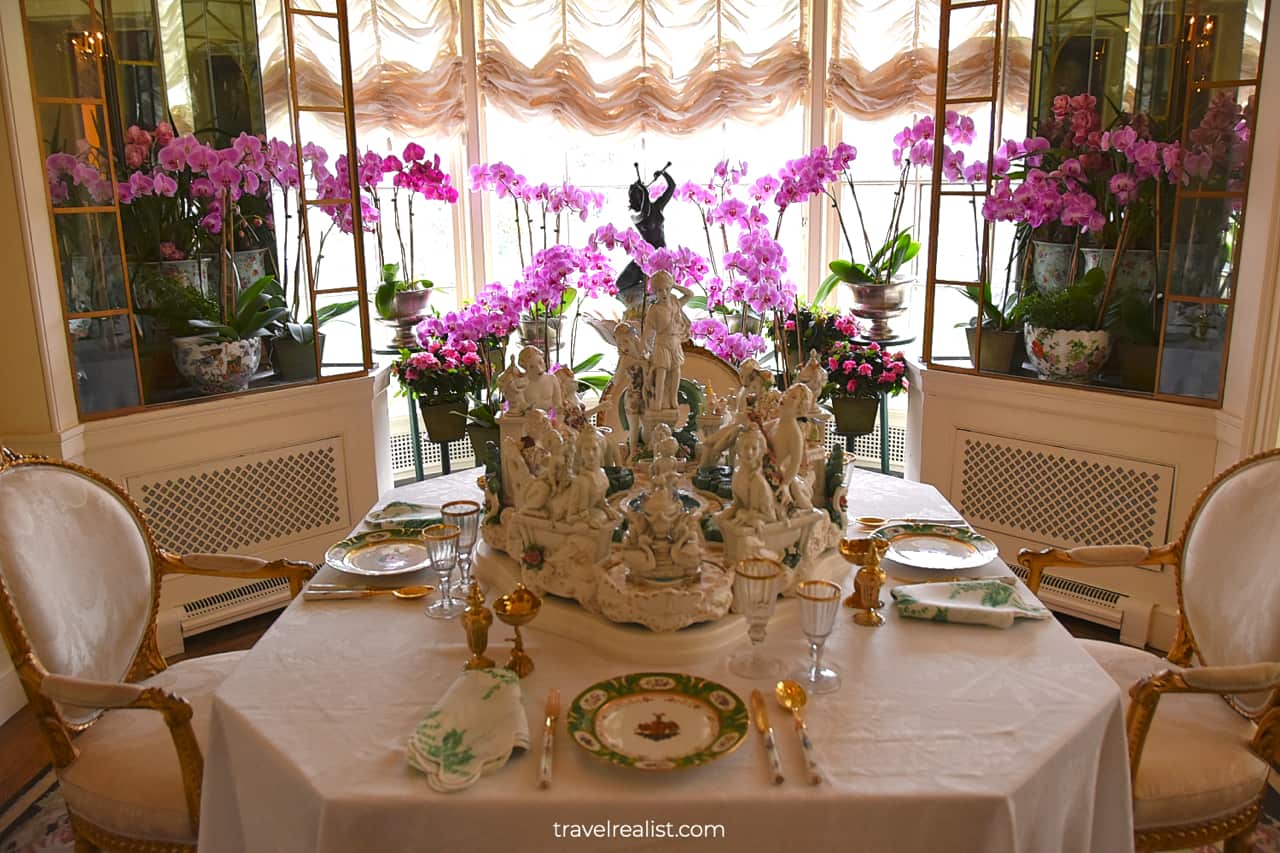
1.9. French Porcelain Room
The Dining Room gives you a few options for continuing your exploration of Hillwood Estate. It might be a good idea to stop by the French Porcelain Room for a few minutes.
This room has a similar setup to the Russian Porcelain Room. You could study the items inside the glass display cabinets. You might even be able to find differences in patterns between the 18th century sets.
The items in the French Porcelain Room are on constant rotation. Museum docents regularly put some of the dinnerware sets on display in the Dining and Breakfast Rooms.
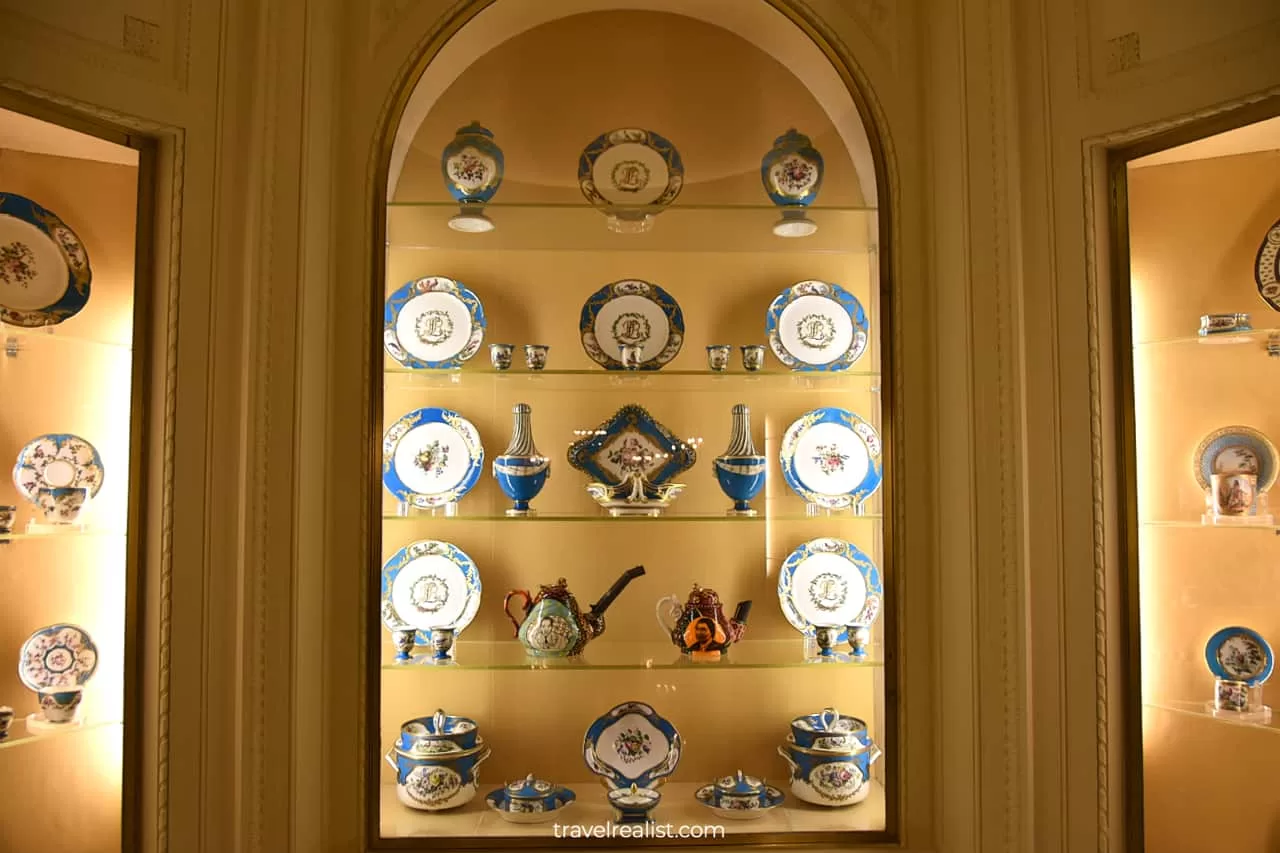
1.10. Kitchen
You should continue your visit to Hillwood Estate in Washington, D.C. with a stop in the Kitchen and Pantry. They are some of the more “modern” rooms at Hillwood Estate.
Their interior design dates back to the 1950s. It has a handful of elements that were common during that time. You could see a nearly identical kitchen in the Texas White House at LBJ Ranch.
But you do not have to travel to the Texas Hill County and the Pedernales River to see this kitchen. They are still present in a few residential houses from that era all around the country.
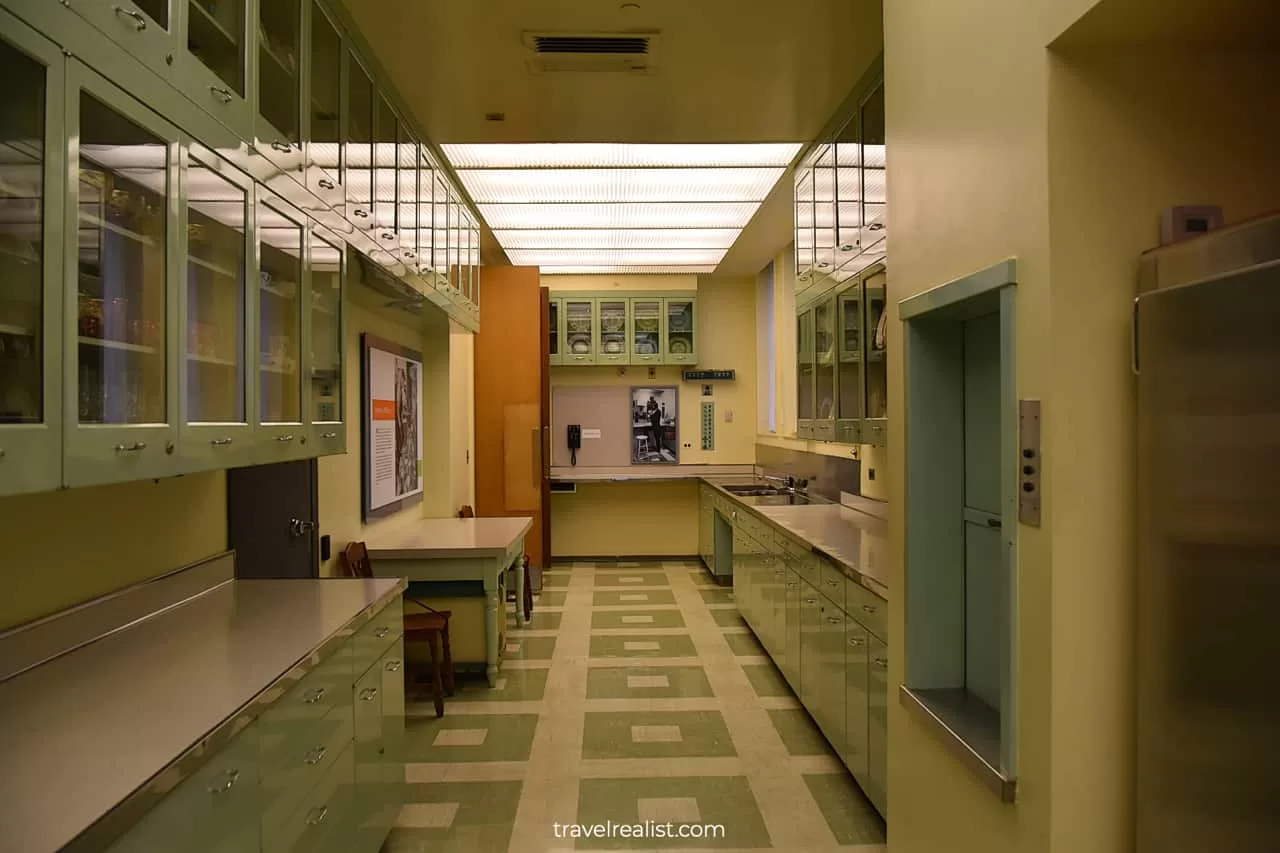
1.11. Staircase
The Kitchen and Pantry are the last first floor rooms open to the public. You should take a Grand Staircase to see the rooms upstairs. The Staircase is also a great place to admire the Entry Hall paintings.
You cannot go upstairs without noticing a full-length portrait of Catherine the Great. This painting is one of the largest art pieces in Hillwood Estate in Washington, D.C.
But the portraits are not the only fascinating item on the Grand Staircase. Take a look at a grandfather clock, a candlestick, and wrought-iron railing. And do not miss an enormous chandelier.
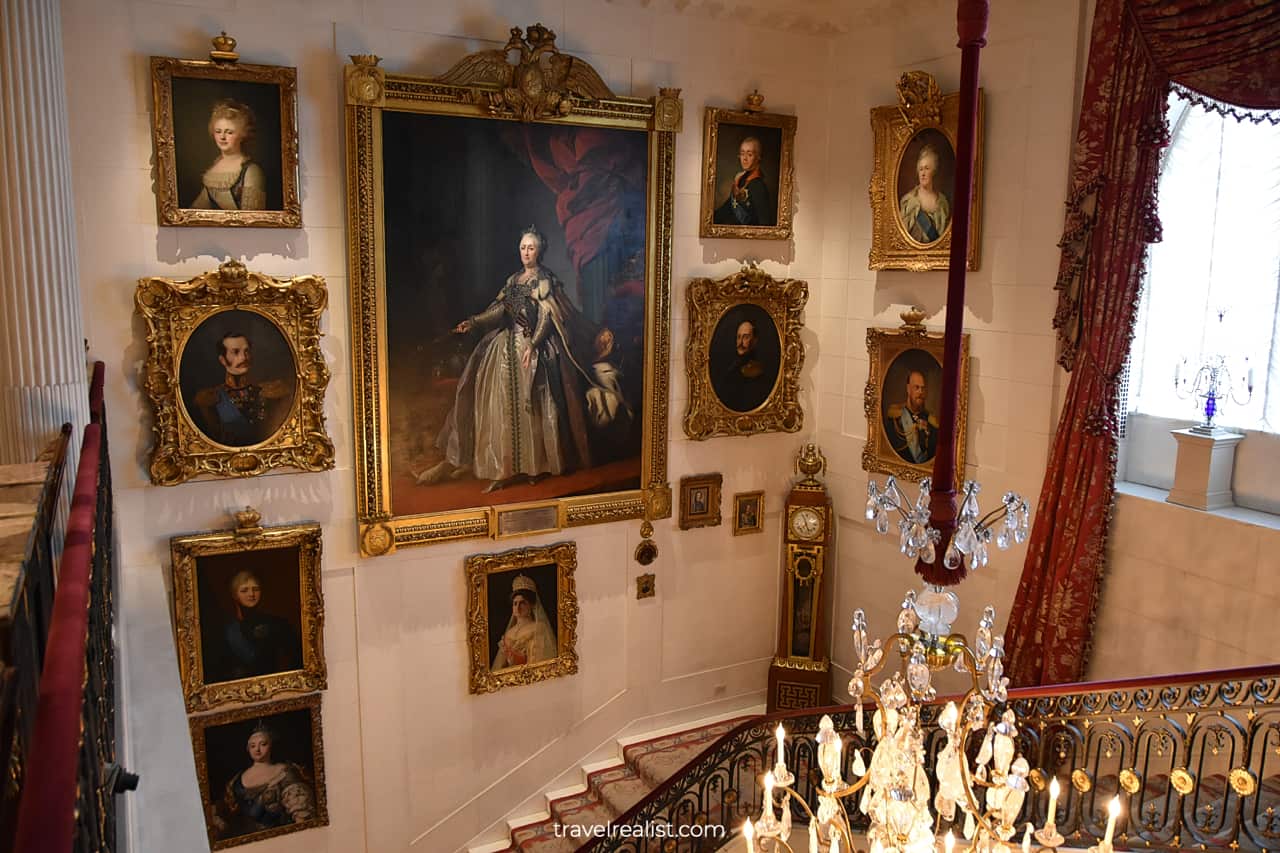
1.12. Second Floor Hall
The Grand Staircase brings you to the Second Floor Hall. It is another great art display. Family portraits, porcelain dinnerware, and vases are a sight to see in the Hallway.
Carved wood display cabinets and upholstered chairs round up the list of items in the Second Floor Hall. They make the Hallway much more than a connecting space to the rooms.
The next sections of this Hillwood Estate Washington, D.C. Guide cover the rooms on the second floor. These rooms look a lot more like traditional house museums on the Atlantic Coast.
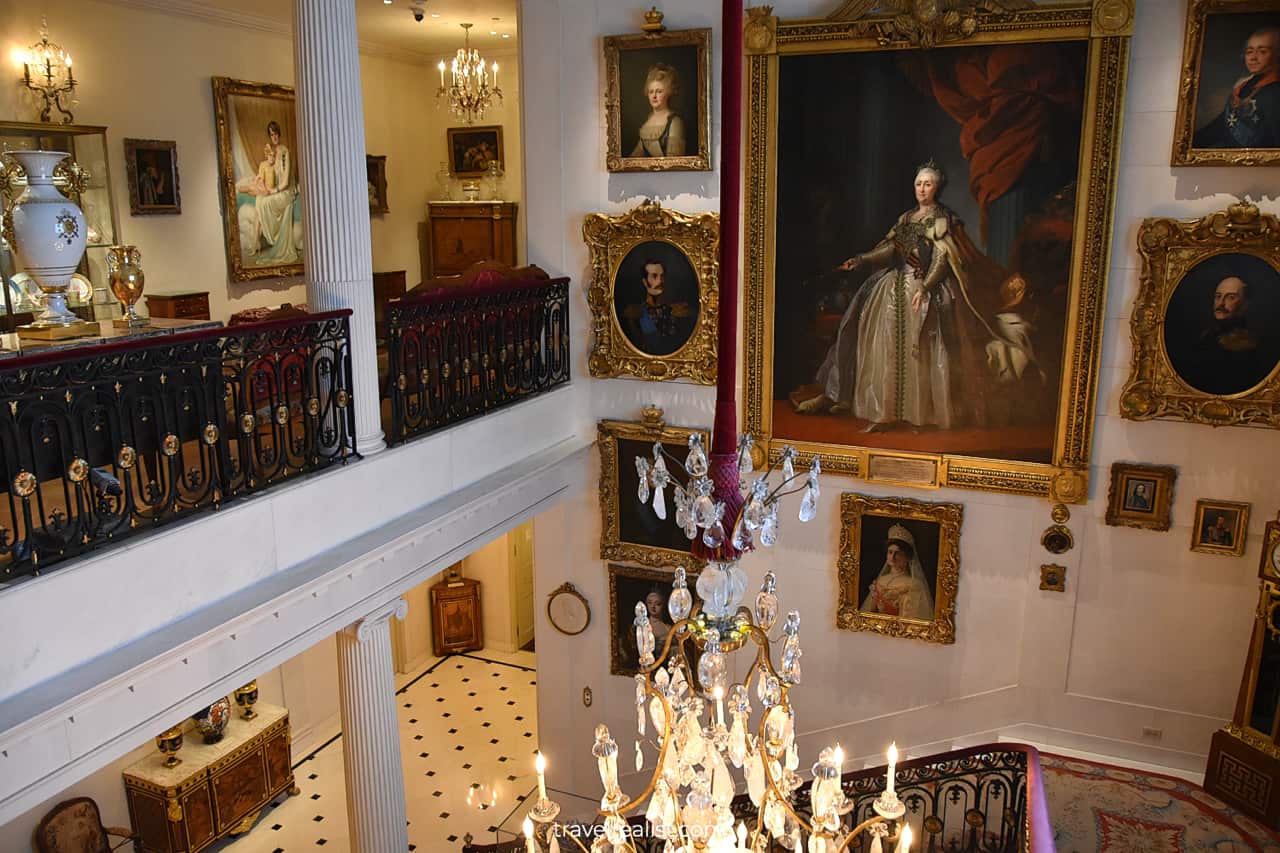
1.13. Post Bedroom Suite
The Post Bedroom Suite is the right most room on the second floor. It is a good room to explore next. This Master Bedroom belonged to Ms. Post. It is directly above the French Drawing Room.
The Post Bedroom Suite houses a few beautiful furniture pieces. There is a wooden bed, chairs, and chest of drawers. Matching pink curtains above the bed and windows complete the look.
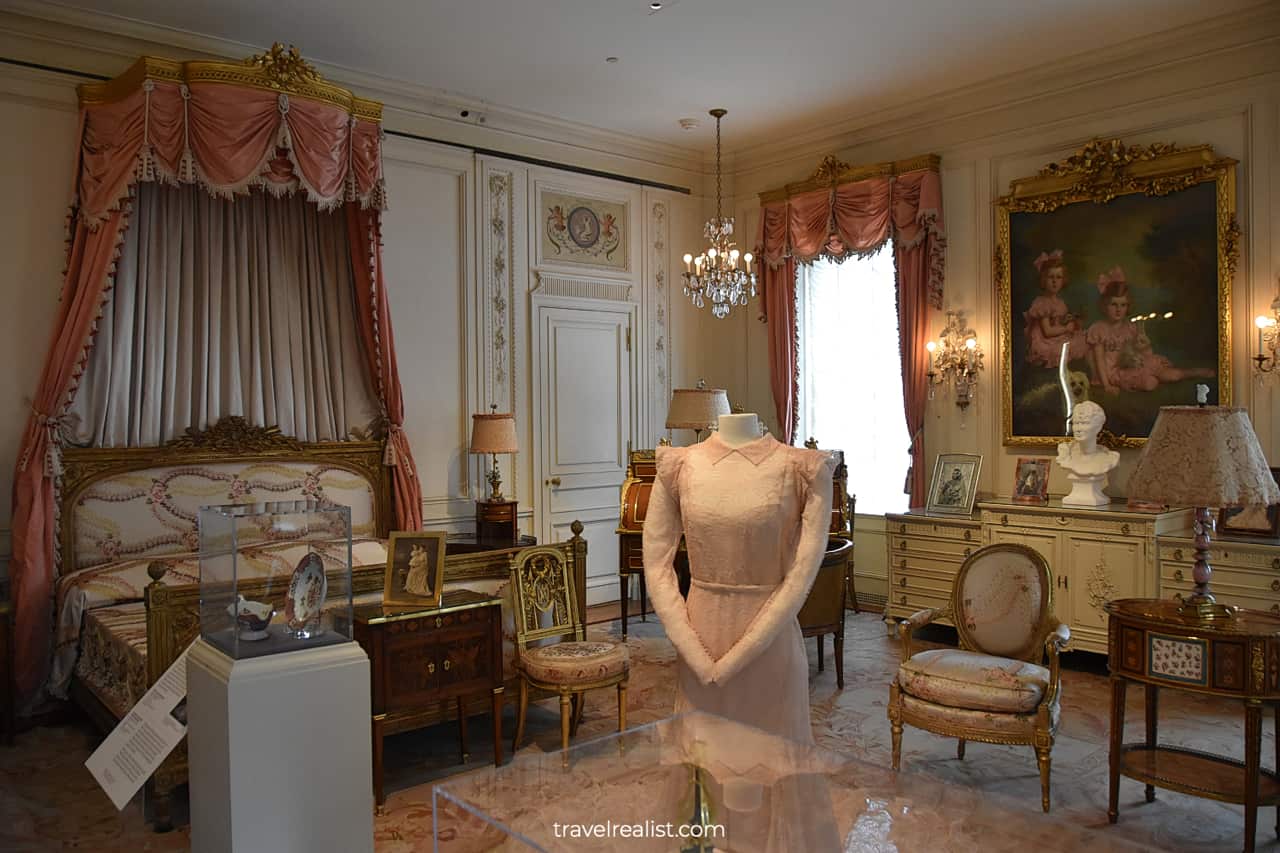
Like any Master Bedroom, Post Bedroom Suite has a bathroom and a walk-in closet. But since Hillwood Estate is a mansion, there are a couple of closets and even a dressing room.
The closets also serve as exhibits in this museum. You could see a few dresses, shoes, and jewelry items from Ms. Post. The Post Bedroom Suite is a first true house museum room at Hillwood.
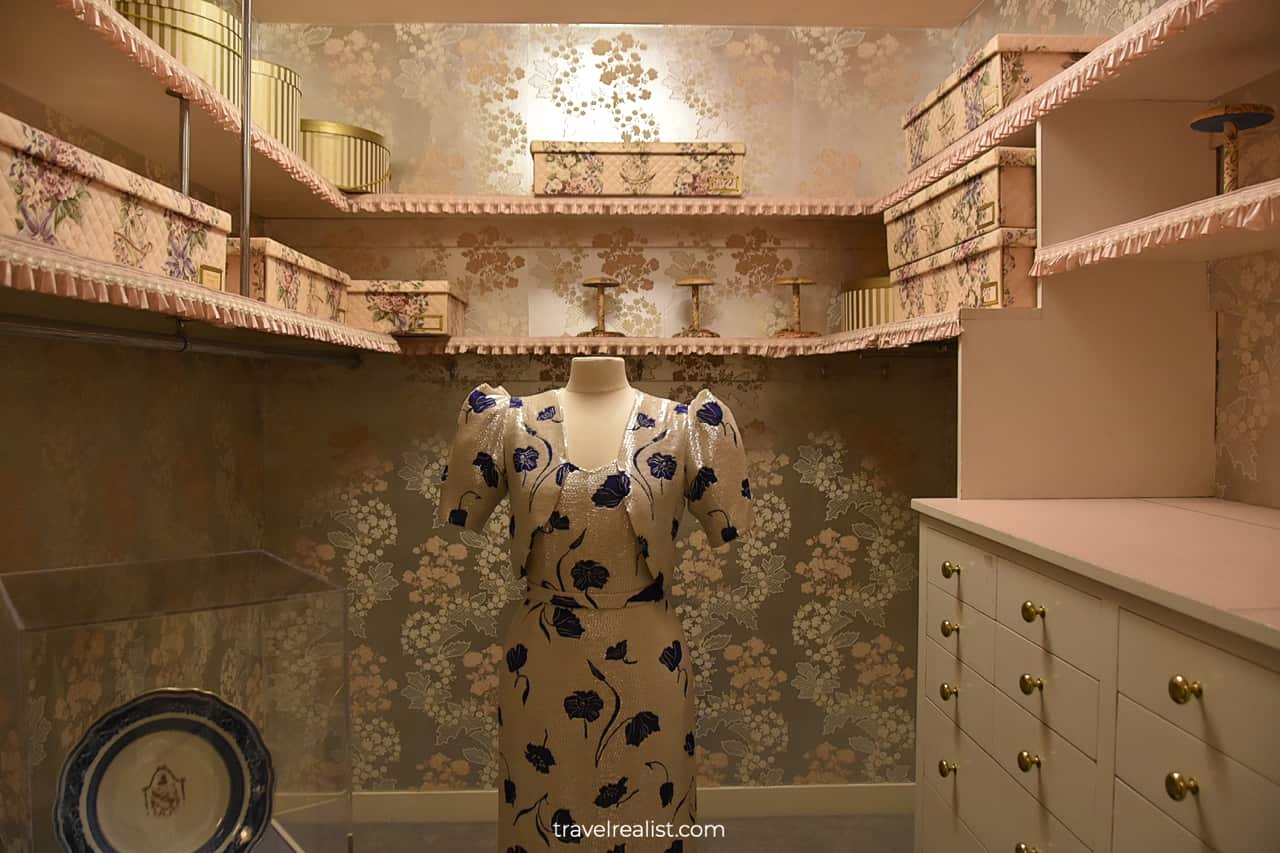
1.14. Adam Bedroom
The Post Bedroom Suite connects to the Adam Bedroom. The name of this room is misleading. You might think that it belonged to an Adam. Perhaps, he was a husband, a son, or a friend of Ms. Post.
In fact, Adam Bedroom has nothing to do with Post family or friends. It refers to the Adam style of interior design. It became popular at the turn of the 19th century.
Twin beds, nightstands, and fireplace mantel in this room are all part of this style. You should also enjoy the beautiful patterns on the ceiling and walls.
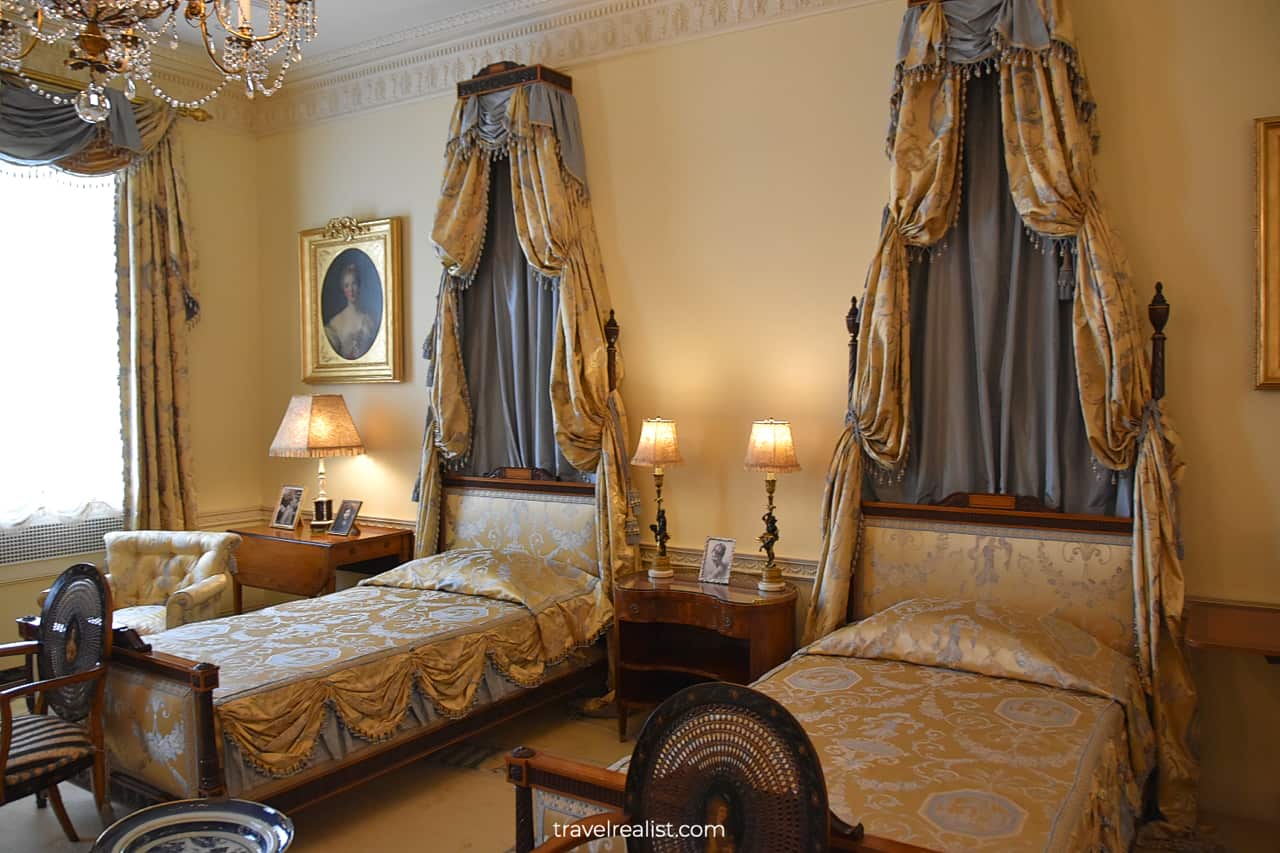
1.15. Second Floor Library
You could go from the Adam Bedroom via the Dressing Room to the Second Floor Library. In fact, this Library is an extension to the bedroom.
This cozy room has far fewer books than the main Library on the first floor. But there are plenty of other things on display. Look for Porcelain figurines and bowls on the shelves.
A few large paintings hang on the walls of the Library. They include portraits of Ms. Post, Ms. Post’s daughter, and Sir Winston Churchill.
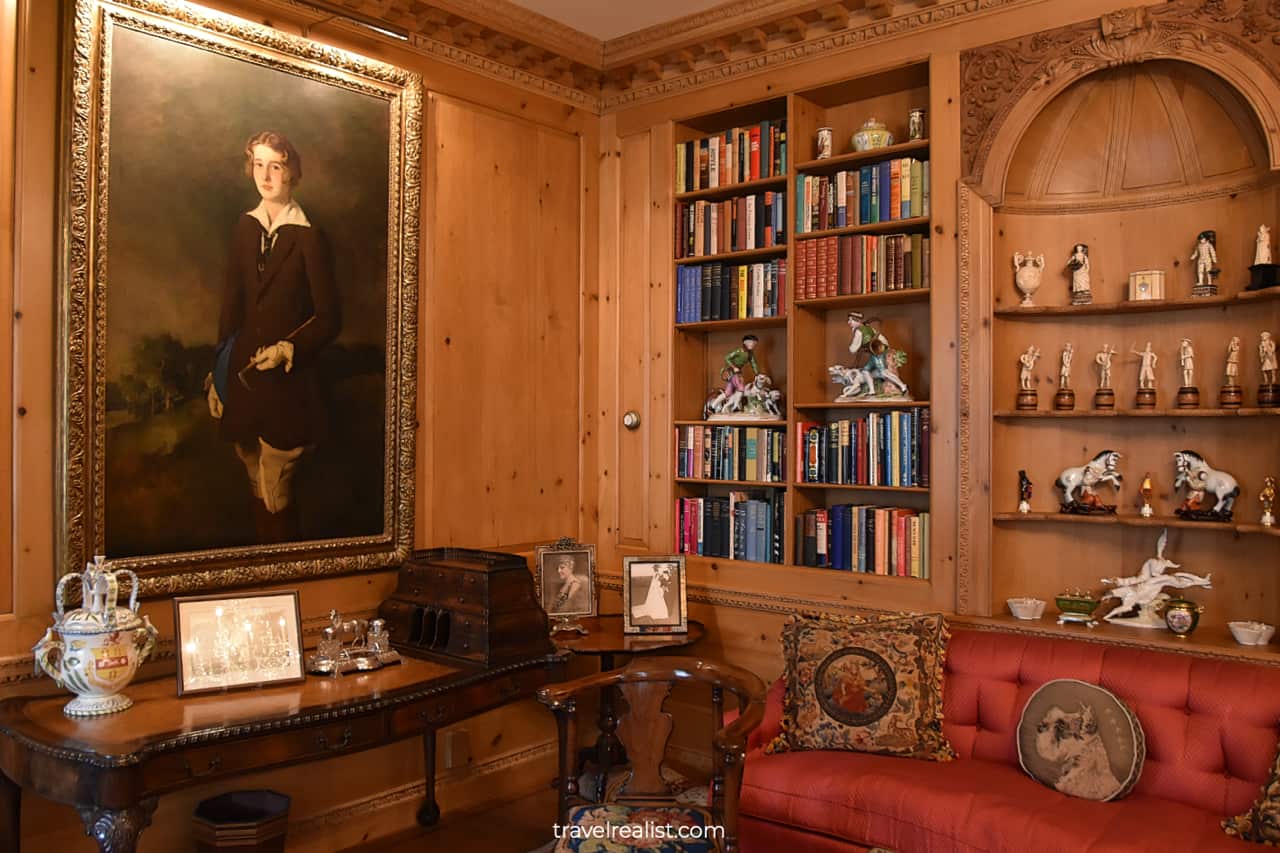
1.16. English Bedroom
The English Bedroom is a guest room at Hillwood. This room could not be more different from the rest of the house. Most rooms look just like the Gibson House in Boston, Massachusetts.
But the English Bedroom has a different look and feel. It feels closest to the Ernest Hemingway Birthplace House, Nichols House, and Meeker Mansion.
Lace curtains, wallpaper, and canopy bed are to thank for this perception. These design choices make this room look at least 30 to 50 years older than the rest of the house.
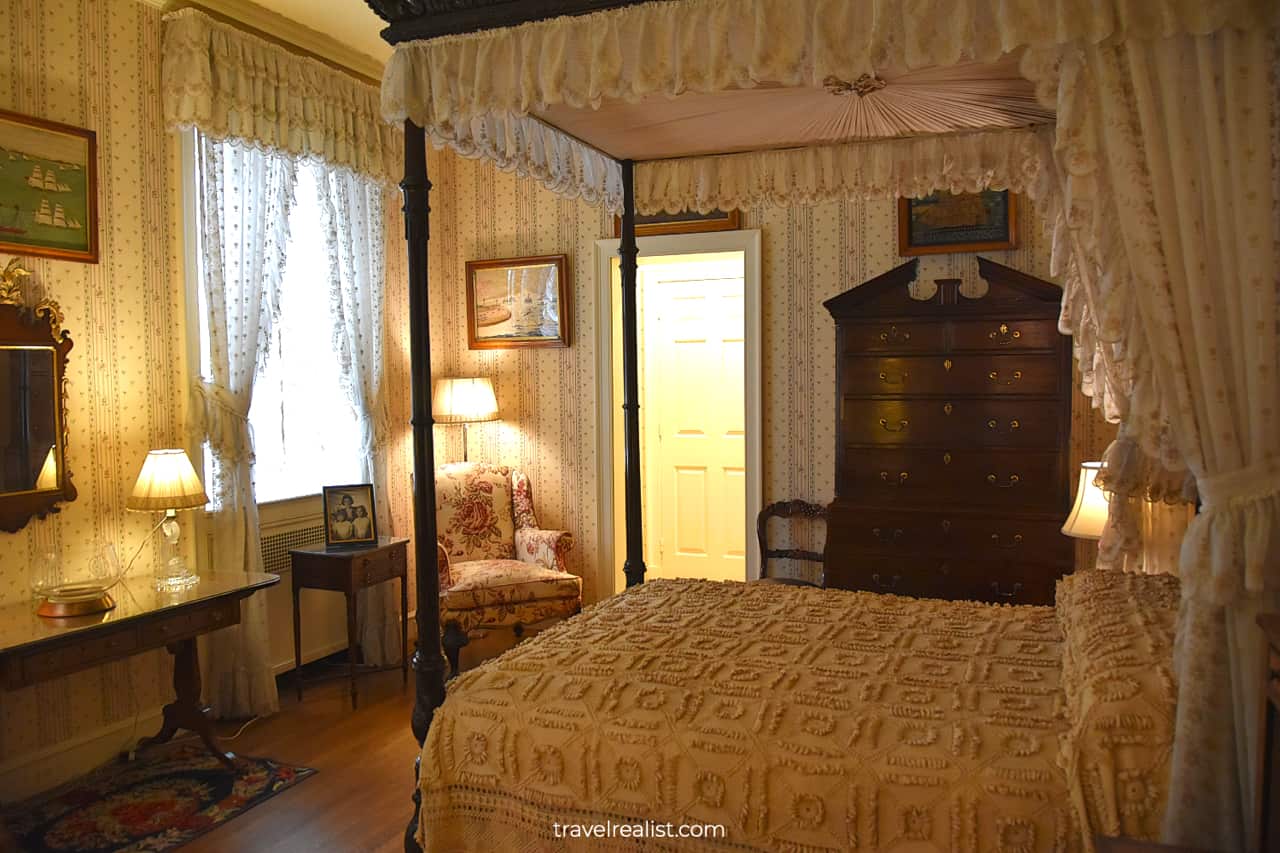
1.17. Russian Sacred Arts Gallery
The second floor of Hillwood Estate is home to one other room that is open to the public. The house museum might have saved the best for last. You are about to enter the Russian Sacred Arts Gallery.
You will find glass exhibits with religious items in the Gallery. Golden crowns, chalices, cloth, and icons are on display in this room.
There are no furniture pieces other than the exhibits to speak of in this room. Outside of the Icon Room, the Russian Sacred Arts Gallery feels the most like a museum hall at Hillwood.
The Russian Sacred Arts Gallery marks the end of you self guided tour of the house museum. You need to take one of the staircases down to the ground floor. But your Hillwood exploration does not stop here.
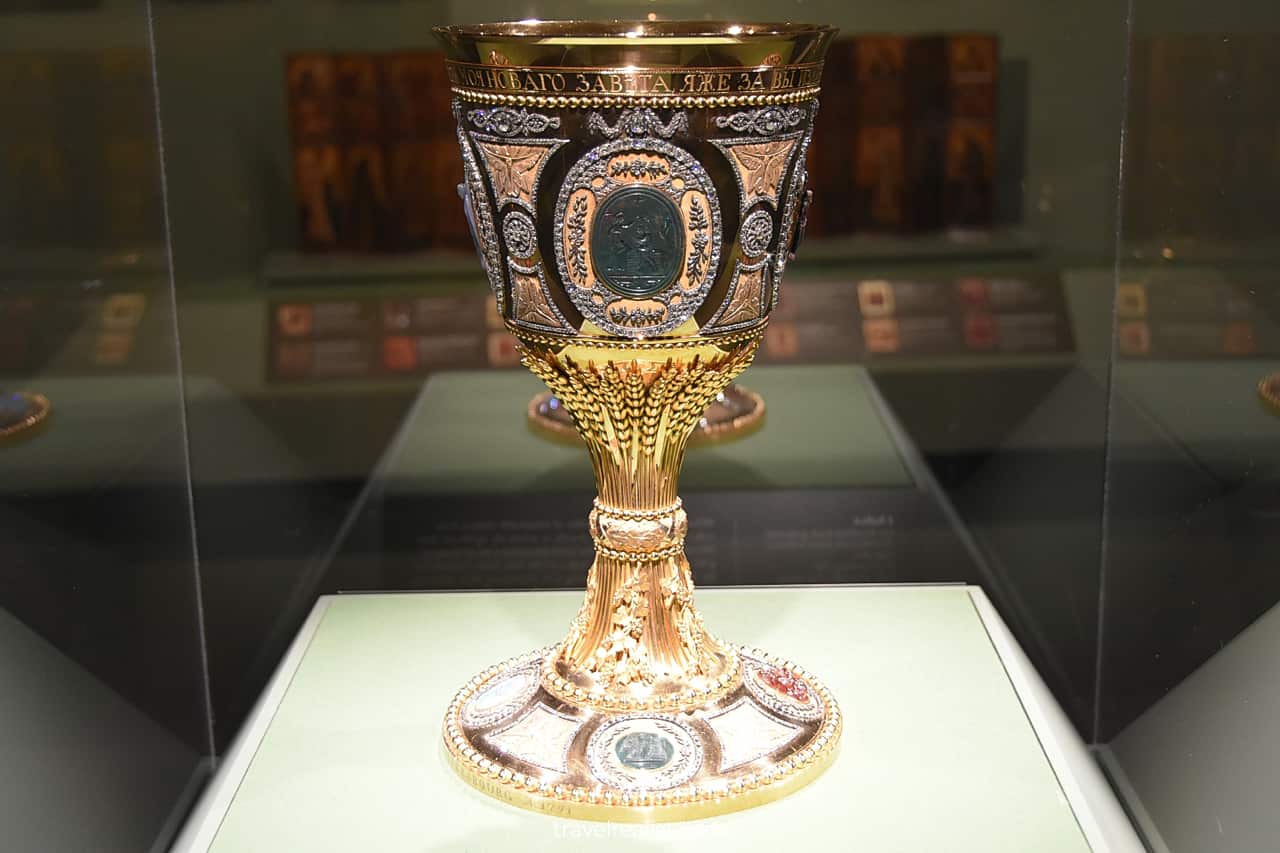
2. Hillwood Estate Gardens
Once you studied the historic items and art pieces in the House Museum, you should head to the Hillwood Gardens. These Gardens are versatile enough to be their own destination.
There are formal gardens and parks, golf fields and lawns. You could travel to Europe and Japan without leaving Washington, D.C. There is even an art display at a nearby country house.
The next few sections of this Hillwood Estate Washington, D.C. Guide will describe key parts of the Gardens. You will see the Greenhouse, French Parterre, Japanese Garden, Dacha, and a few more areas.
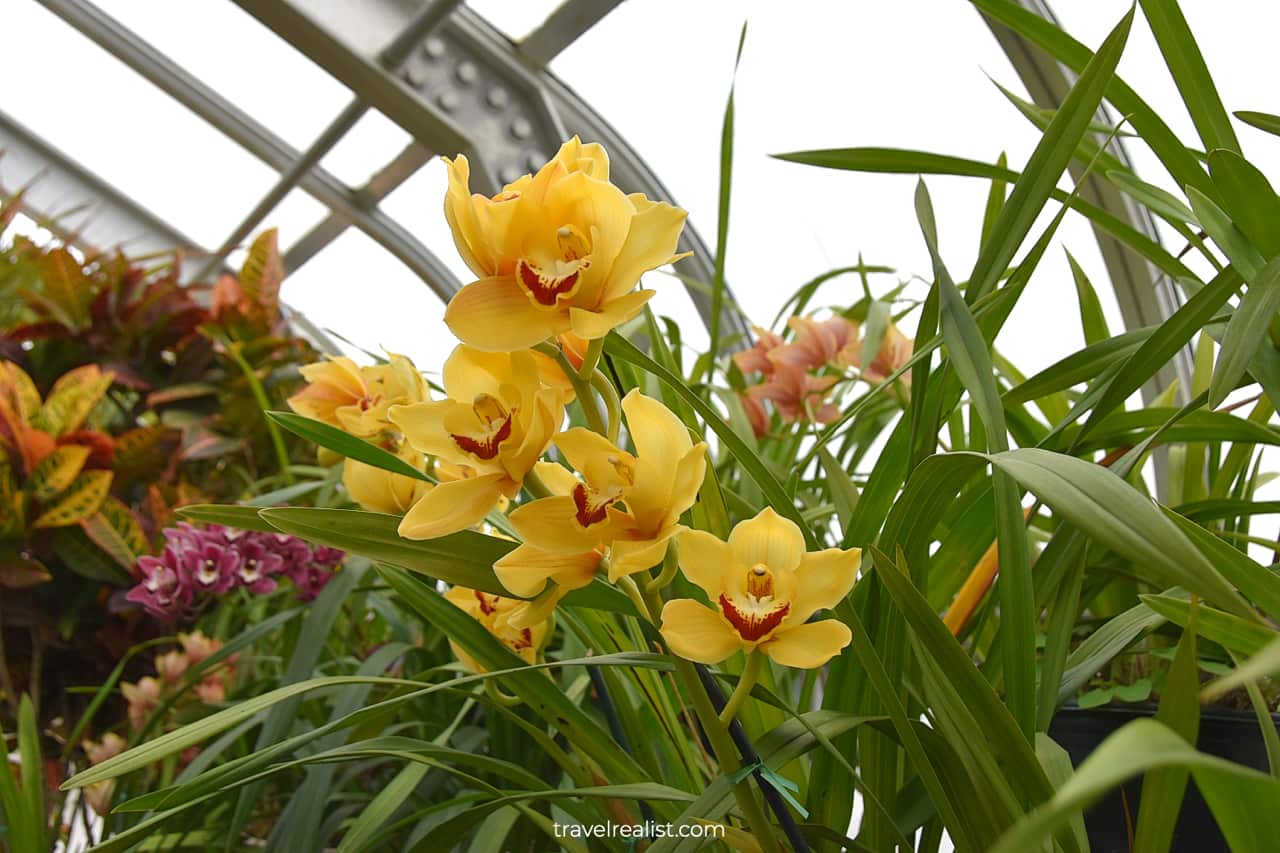
2.1. Greenhouse
The Greenhouse is the highlight of any visit to Hillwood Estate in Washington, D.C. It is possible to start your visit to Hillwood at the Greenhouse. In the end, it is right next to the Visitor Center.
The blooming flowers and tropical plants could be an amazing start to your Hillwood adventure. There will be at least a few plants in bloom no matter when you visit.
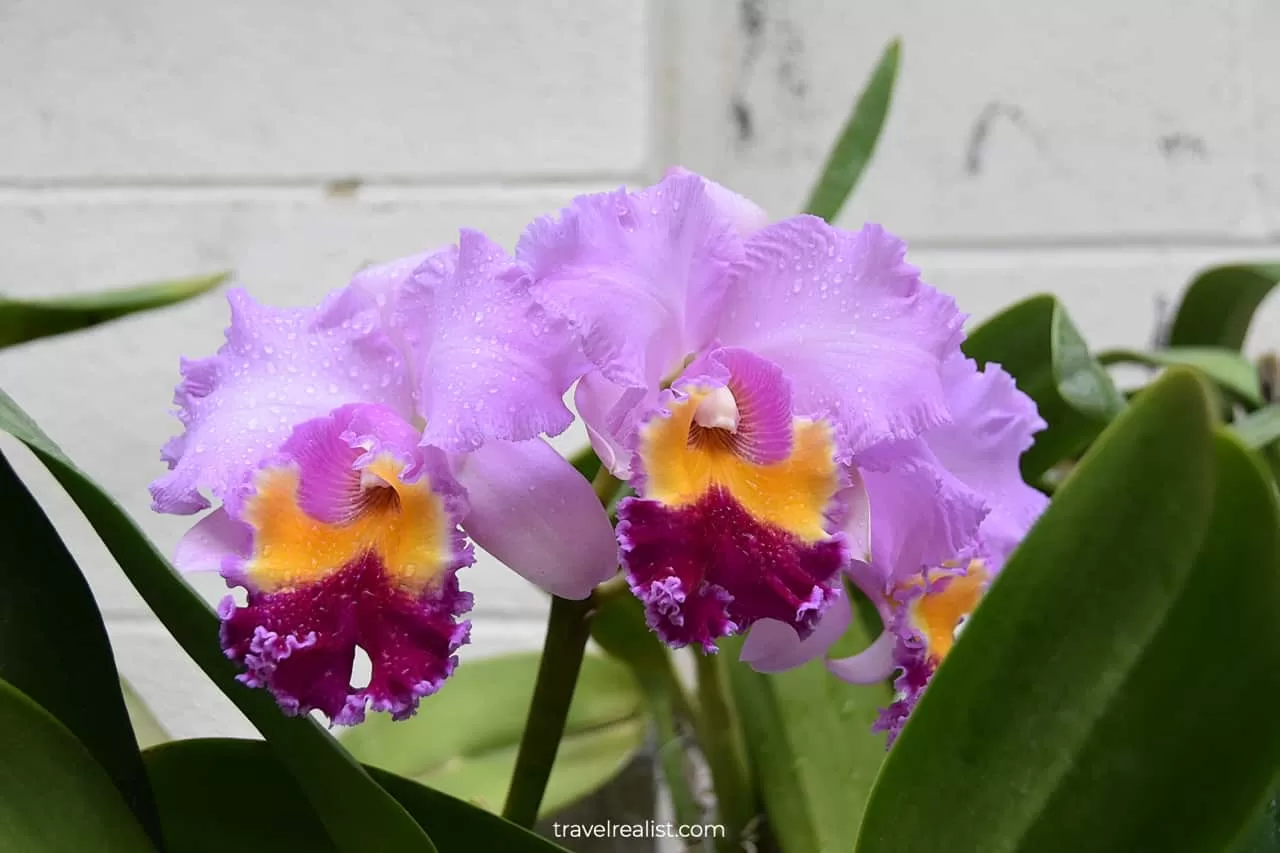
2.1.1. Tropical Plant House
The first few halls of the Greenhouse are home to countless tropical plants. Get ready to feel the warmer temperatures and higher humidity inside.
Some plant pots are on the shelves. Others are hanging from the roof. These thoughtful plant displays resemble those at Garfield Park Conservatory in Chicago, Illinois.
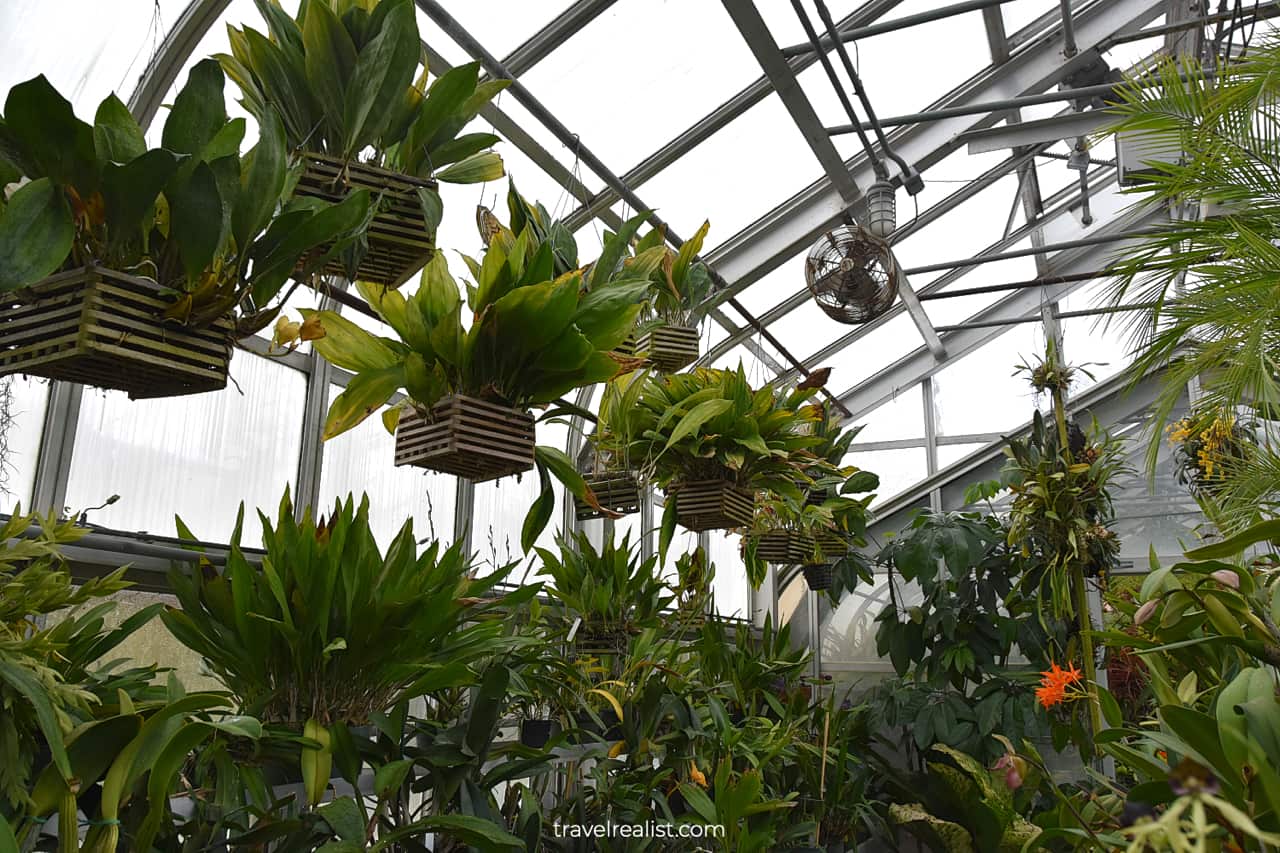
2.1.2. Orchid House
Without any doubt, Orchids are the main flower in the Greenhouse of Hillwood Estate in Washington, D.C. Ms. Post was very fond of orchids and made them a cornerstone of her gardens.
Museum staff and gardeners take great care of the orchids to this day. The number of blooming orchids at Hillwood rivals Lincoln Park Conservatory in Chicago, Illinois.
The variety of orchids at Hillwood Gardens is breathtaking. You could see white, pink, purple, yellow, and red flowers. Various shapes, sizes, and colors are certain to wow any visitor.
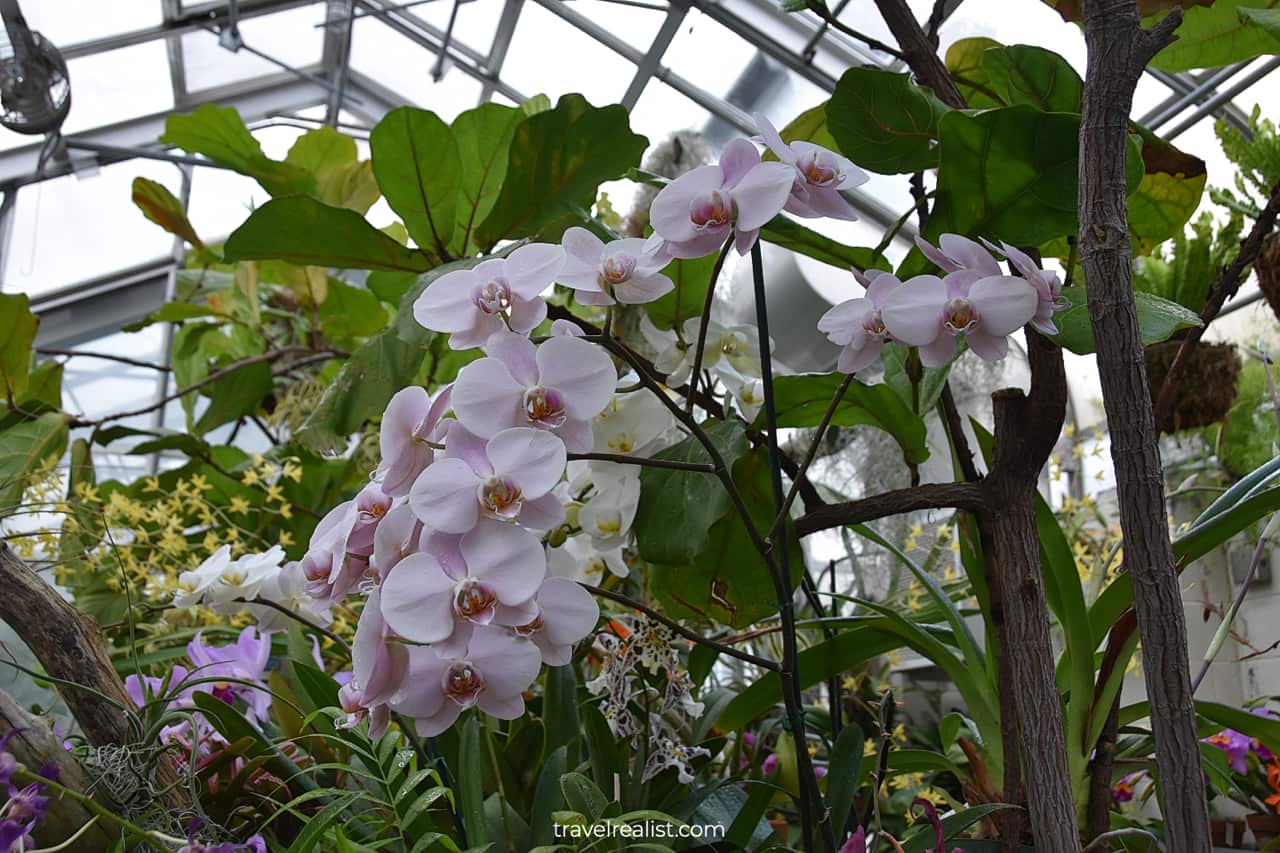
2.2. French Parterre
The Greenhouse sets high expectations for the rest of the Hillwood Gardens. Depending on the season, some areas of the gardens might be more impressive than others.
But you should still take a walk and see everything that Hillwood Gardens have to offer. Take the French Parterre. This garden has a fountain, statues, flowers, and live ivy fences.
The fountain will likely be off if you visit Hillwood Estate between mid fall and mid spring. Still, two tunnels through an ivy fence make the French Parterre a worthwhile destination.
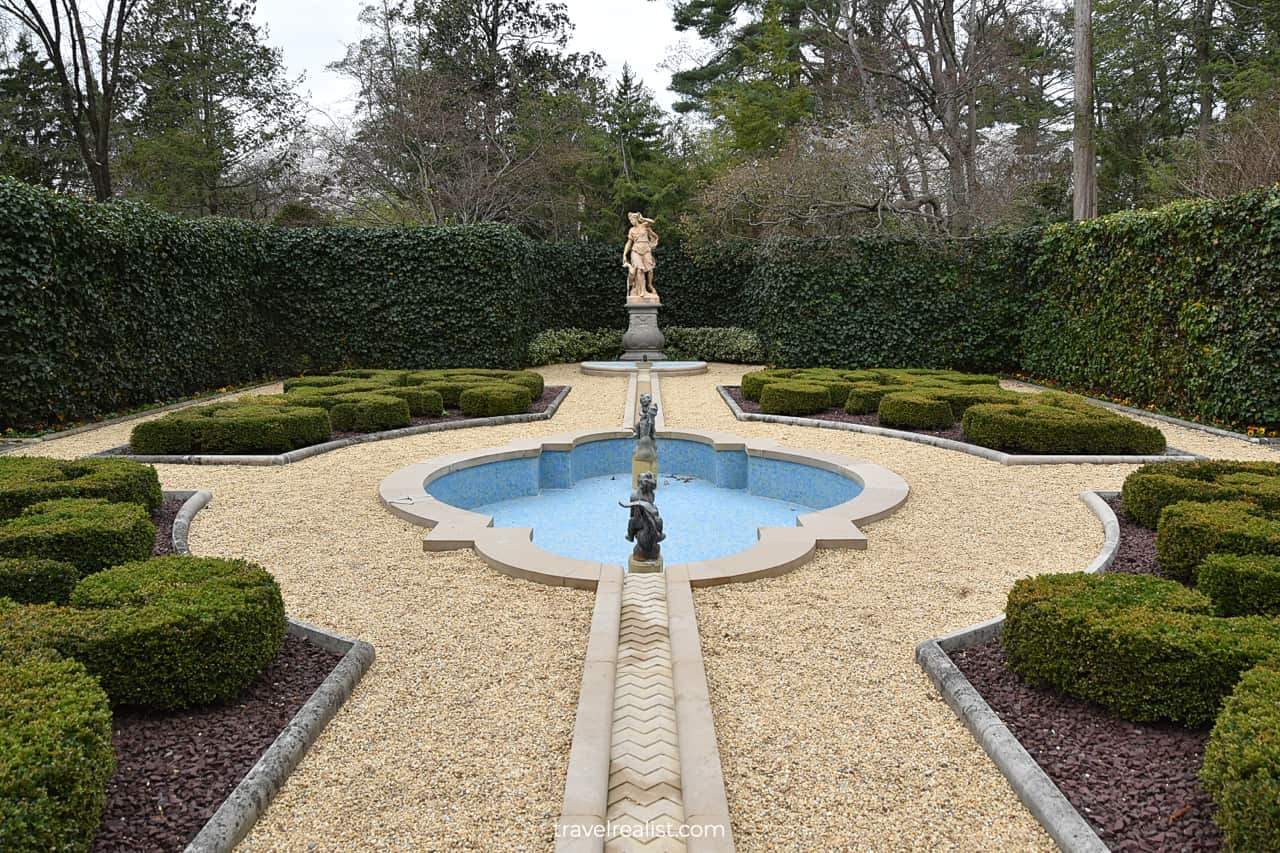
2.3. Rose Garden
The French Parterre is next to the Rose Garden. Blooming roses could be another highlight of your visit to Hillwood Estate in Washington, D.C.
Early summer is the best time to see roses in bloom at Hillwood. But you might get to see blooming flowers during other seasons, too. A few rose hip flowers bloom around the cherry blossom season.
These beautiful blooming flowers could save you a trip to the West Coast. The Rose Garden at Hillwood Estate could rival Morcom Rose Garden and International Rose Test Garden.
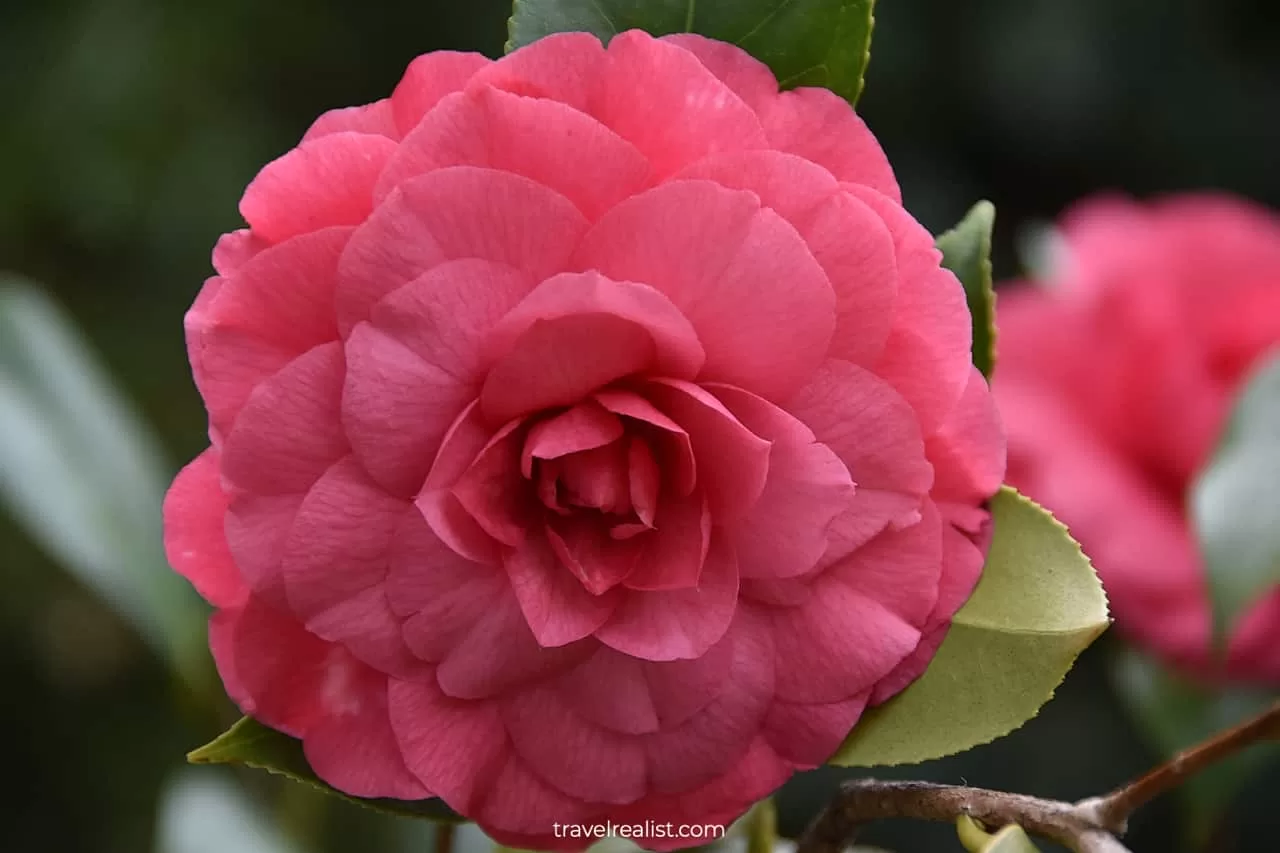
2.4. Four Seasons & Friendship Walk
The Friendship Walk takes you from the Rose Garden to the Four Seasons Overlook. This scenic path was a surprise addition to the Gardens in 1957. It has a gate and a plaque.
The Four Seasons Overlook is a round viewpoint. It could not be more descriptive. Its four sculptures each represent a new season.
A handful of different trees surround the overlook. They were picked to bloom throughout the year. This way, you could enjoy the viewpoint no matter when you visit Hillwood.
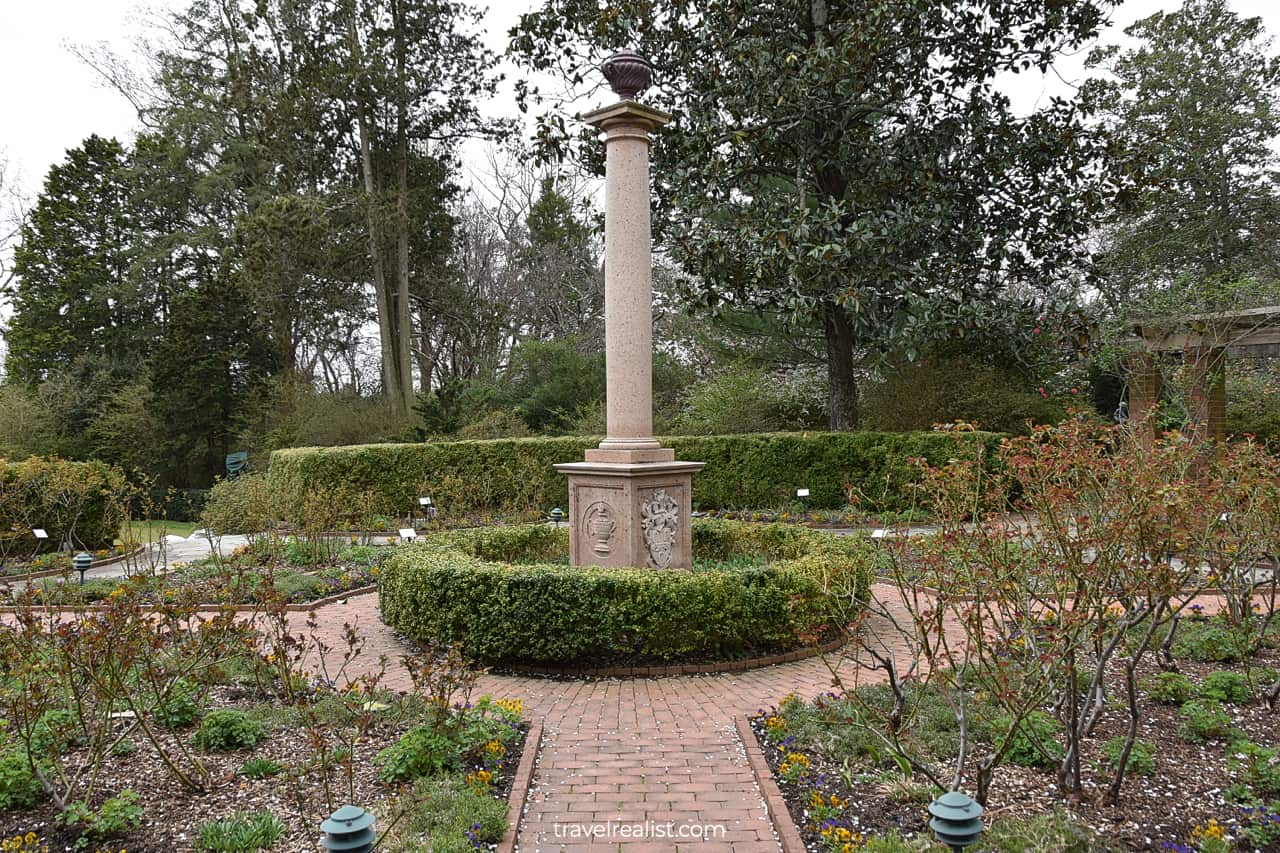
2.5. Putting Green
A Woodland Path connects the Four Seasons Overlook with the Putting Green. This green lawn is a mini golf field. There are 9 holes on the Putting Green.
You are welcome to admire this part of the gardens. But you should not set foot on the green. Help museum staff preserve the Putting Green.
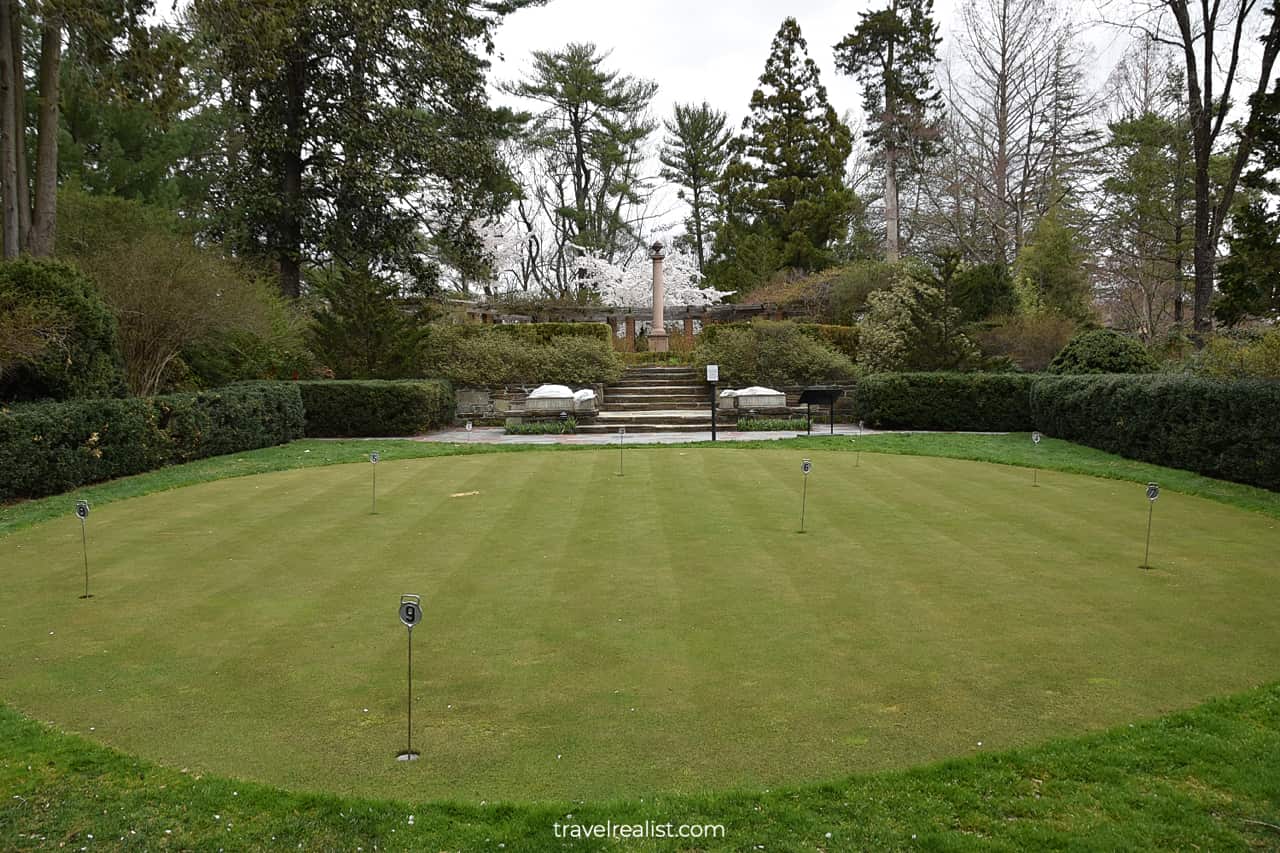
2.6. Japanese Garden
The Japanese Garden is a great next stop on your self guided walk through the Hillwood Gardens. This garden is a perfect place to get pictures. In fact, most photos from Hillwood show the Japanese Garden.
You would not wonder about this fact as soon as you see the garden. The Japanese Garden is a combination of stones, sculptures, and pagodas. There is even a human made pond and a waterfall.
You could cross the pond via a path of round concrete blocks. The garden uses the hilly landscape to its advantage. Staircases and bridges only add to its appeal.
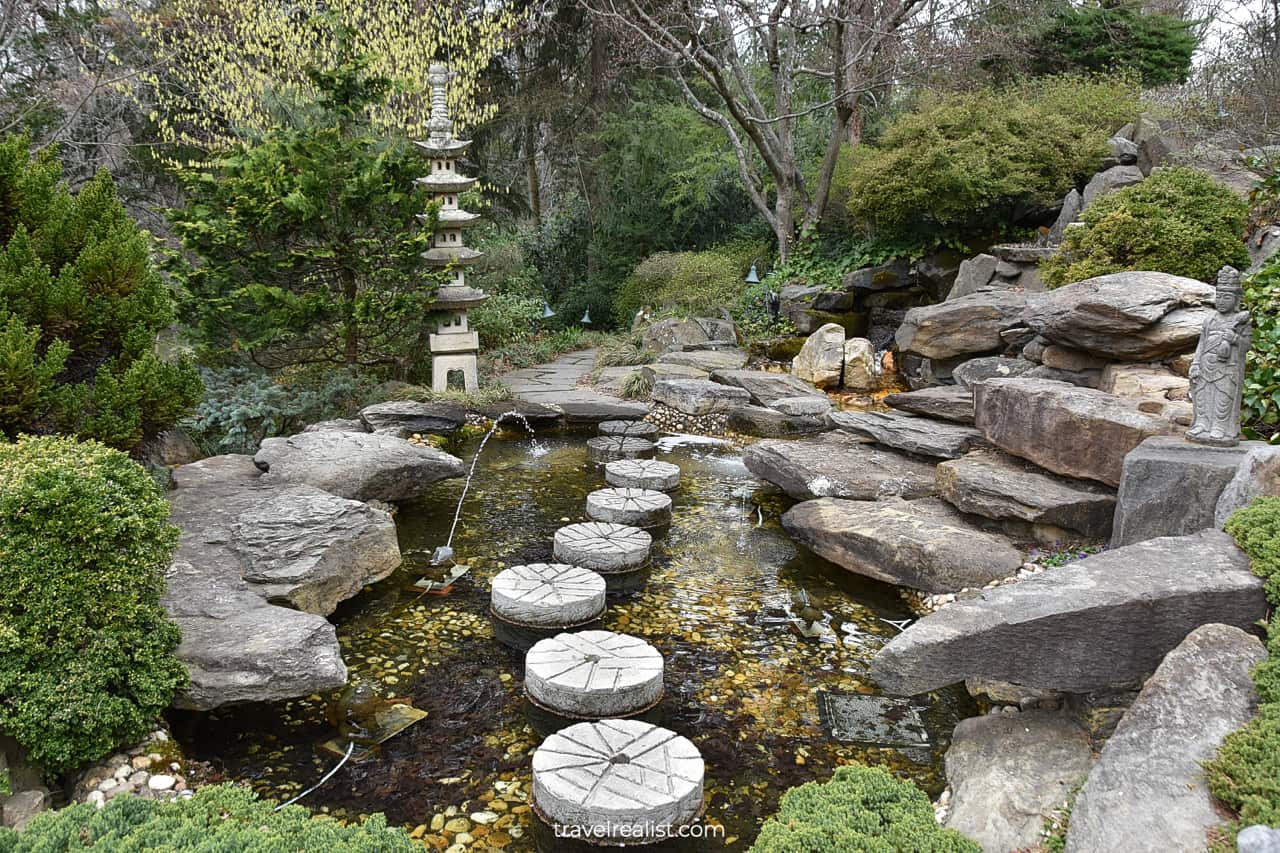
2.7. Lunar Lawn
As you make your way through the Gardens, you should not skip the Lunar Lawn. This part of the Gardens pales in comparison to the Greenhouse, French Parterre, and Japanese Garden.
There are few plants and a lone lion sculpture on the Lunar Lawn. But neither is a good enough reason to explore the lawn. You should head there to get the best views of the Hillwood Estate House Museum.
Its portico bears some similarities with the Vanderbilt Mansion and Mills Mansion in New York. You might also be able to see the Washington Monument from the Porch.
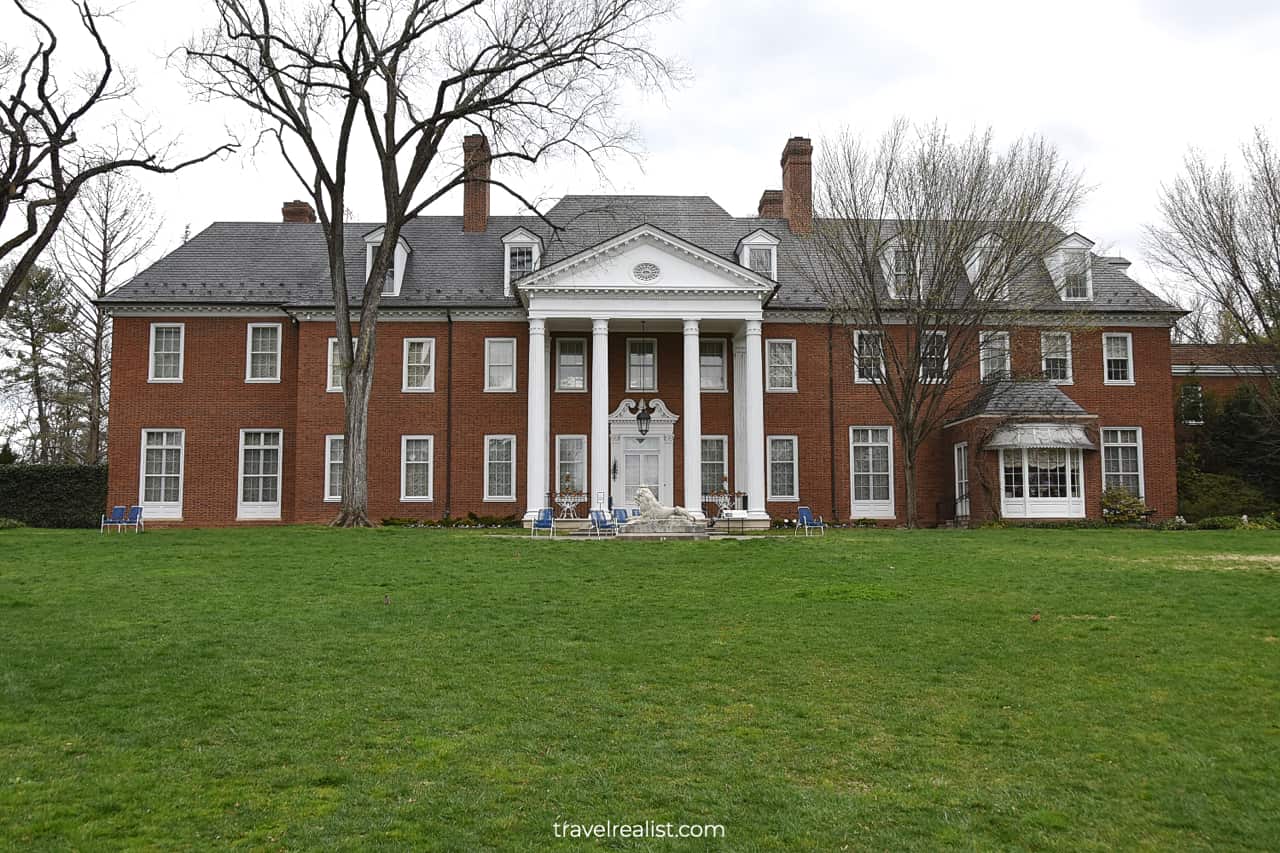
2.8. Dacha
The walk through the Hillwood Gardens continues. You will pass the Vista Terrace and Dog Cemetery. While you are welcome to explore them, both have few things of interest.
The next attraction in the Gardens deserves more of your attention. You will arrive at the Dacha, a Russian country house. This log cabin with wood carvings might not look too inviting from the outside.
Do not jump to conclusions until you enter this building. The Dacha is home to special exhibitions at Hillwood. You could study a few more items from the Estate collection.
An exhibition space is likely the last thing you expect to see inside this log cabin. Add it to the already long list of surprising things about Hillwood.
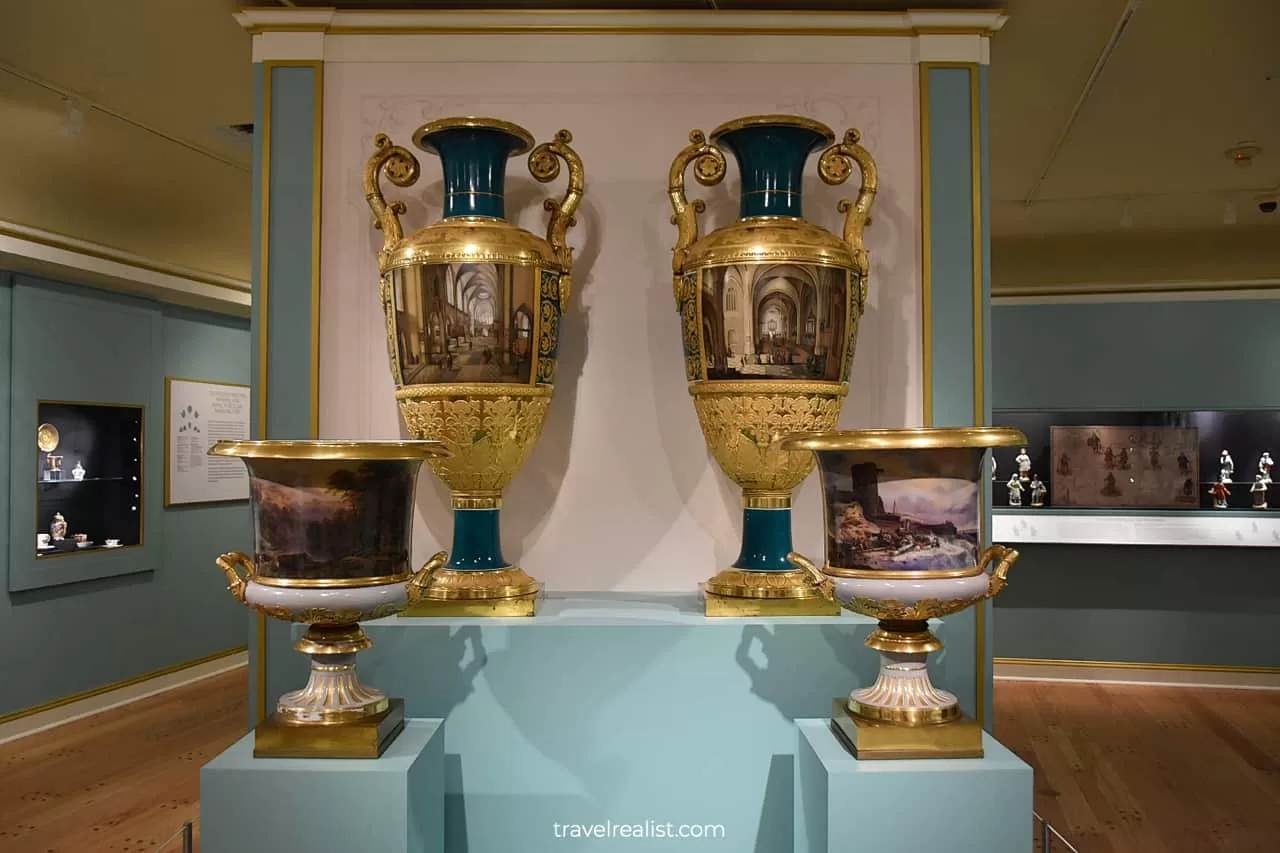
2.9. Adirondack Building
Chances are you will pay greater attention to the cabins at Hillwood going forward. You are in luck – there is another rustic building a short walk from Dacha.
The Adirondack Building refers to Post’s summer house in the Adirondack Mountains in New York. It is also home to special exhibitions at Hillwood. This building is only open when an exhibition takes place.
You could find similar buildings all over the Northeast. Structures at Springwood in Hyde Park and Ringwood State Park in New Jersey come to mind right away.
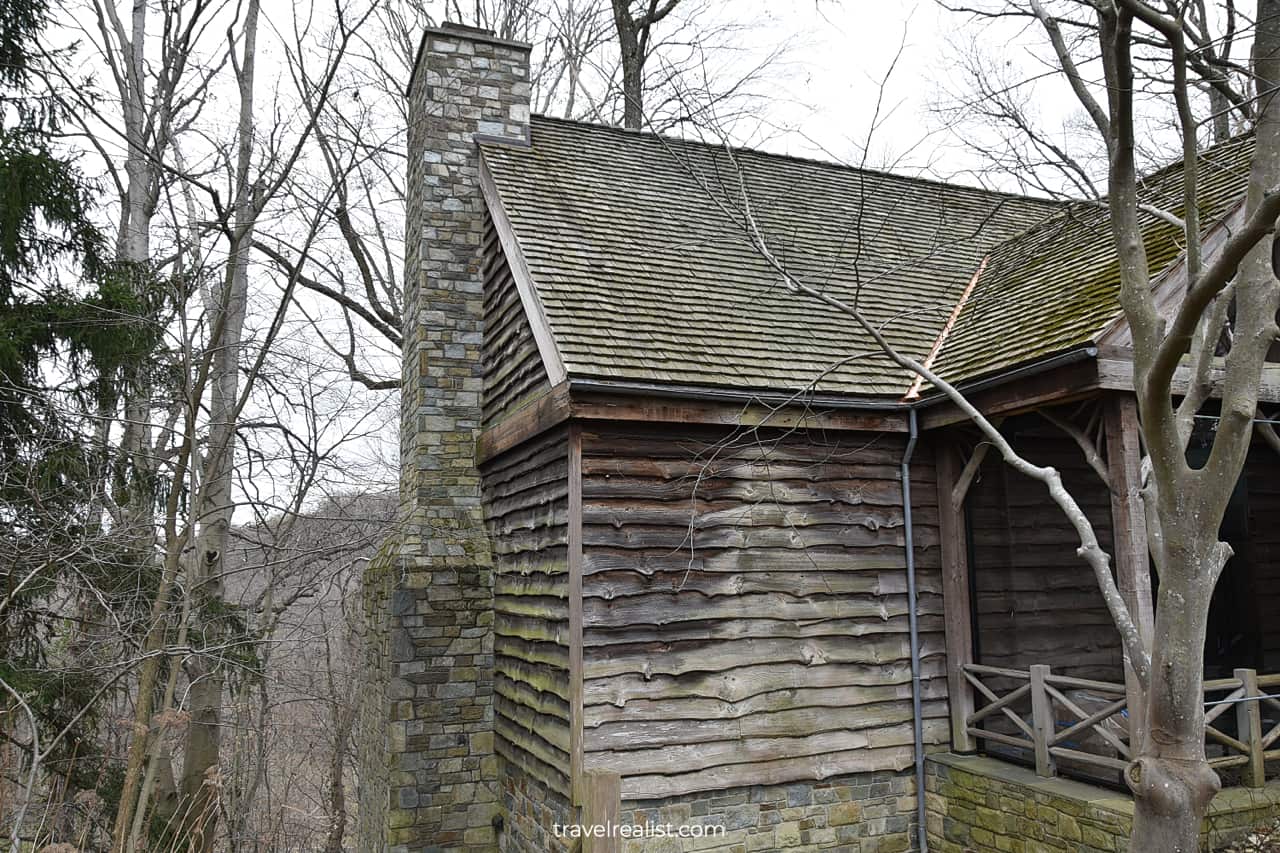
2.10. Cutting Garden
You will arrive in the Cutting Garden after you make a full loop around the house. This garden used to be flower growing grounds for house decoration back in the 1960s.
The museum staff switched to displaying live potted flowers in the mansion. As a result, this garden no longer has the same use case. You could still stop by and see beautiful live flowers in the Cutting Garden.
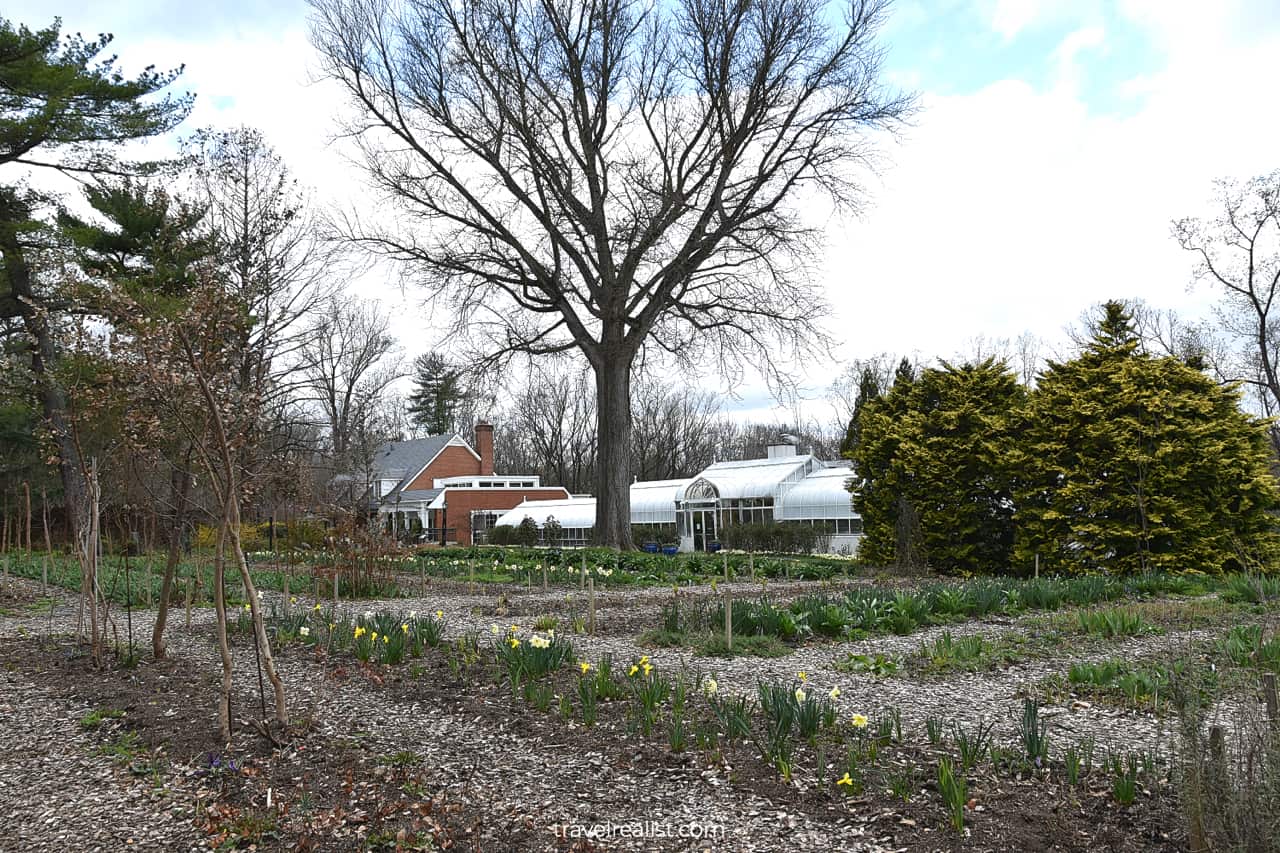
3. Sights near Hillwood Estate
No overview of Hillwood Estate in Washington, D.C. could be complete without a description of the nearby sights. The Estate is next to a handful of Embassies in the historic mansions.
But you might not see much of these mansions due to high live fences. Head south to Embassy Row on Massachusetts Avenue. It is a much better viewing location for historic mansions turned embassies.
There are plenty of other places to visit near Hillwood. This section of the Hillwood Estate Washington, D.C. Guide covers Rock Creek Park and its sights.
3.1. Rock Creek Park
Hillwood Estate borders Rock Creek Park to the east. This free urban park is one of the best places to reconnect with nature in D.C.
The park spans for miles (km) along Rock Creek. It continues from the creek confluence with the Potomac River to the District boundary. You could take a walkway through the entire park.
While the park is next door to Hillwood, there is no direct pathway. You would have to take Linnean Avenue to the access point at Pierce Mill. Be careful since this residential street does not have a walkway.
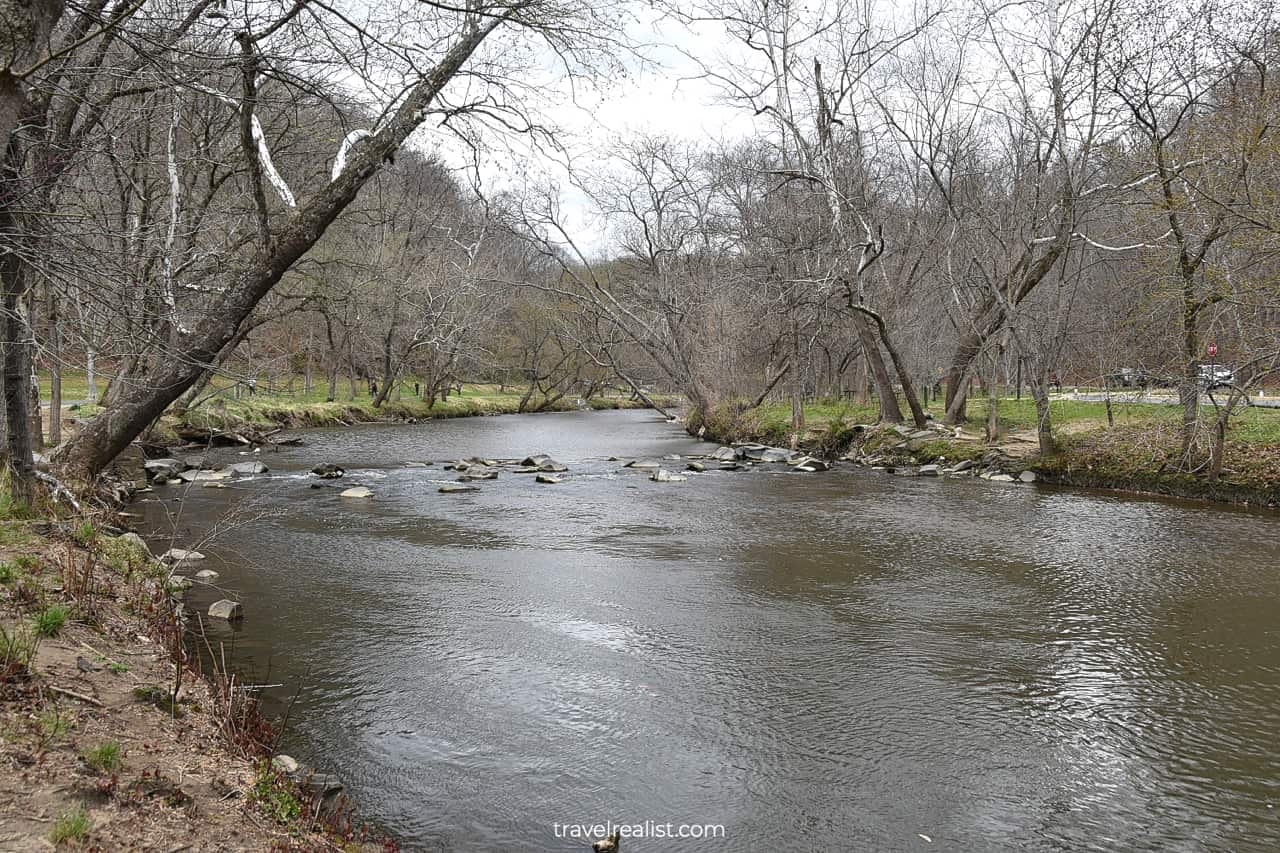
3.2. Pierce Mill
Pierce Mill is the last grist mill on Rock Creek. It dates back to the 1820s. It was an important part of the community and food supply system in the 19th century.
Similar structures are present all over North America. You could see grist mills in Waterloo Village in New Jersey and in Balls Falls in Ontario.
Pierce Mill is now both a visitor center and an exhibit. You could see the mill in action if you visit it on a weekend. Park staff could help answer your questions about the mill and the park.
The area around Rock Creek is quite similar to other parks on the Atlantic Coast. Hiking in Rock Creek Park is not much different from Ramapo Mountain and Bear Mountain.
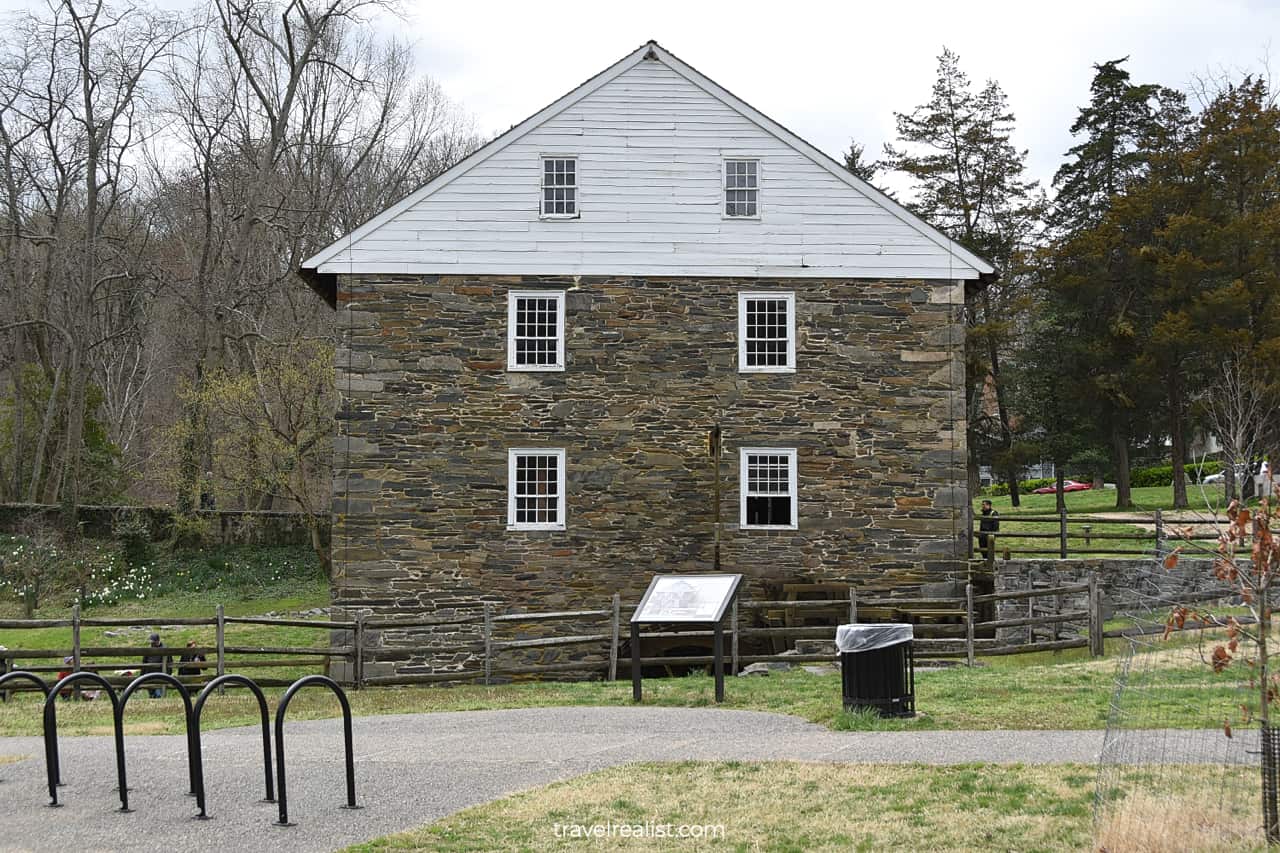
Continue with this Hillwood Estate Washington, D.C. Guide. You will learn more about ways to get to the sights, entrance requirements, and places to stay.
Getting to Hillwood Estate
Hillwood Estate, Museum & Gardens is a house museum in Washington, D.C. The Estate is in Forest Hills neighborhood of Northwest Washington. This part of the city is home to a few embassies and parks.
You could get to Hillwood Estate by car. If you drive to Hillwood Estate, you are welcome to use free parking. This is a nice surprise since the museum is near the center of Washington, D.C.
Public transport offers a convenient way to reach Hillwood. Van Ness-UDC is a subway station on the Red Line. It is 0.9 miles (1.4 km) from the house museum. This walk should take about 20 to 30 minutes.
A weekday Metrorail fare could be between $2 and $6 depending on the ride length. You would pay just $2 per ride on the weekend. A one day pass costs $13. It will be difficult to break even on the weekend.
Out-of-state visitors could fly to any D.C. area airports to visit Hillwood Estate. Ronald Reagan National Airport (DCA) is the closest airport to the museum. It is less than 10 miles (16 km) south of the Estate.
Dulles (IAD) is a less convenient option. It will take you at least 45 minutes by car or almost 2 hours by public transport. But there are more airlines that fly to IAD than DCA.
Baltimore-Washington (BWI) is the last airport to consider. It is about as far from Hillwood as IAD. But there are fewer public transport options. A trip from BWI will likely the longest and the most expensive.
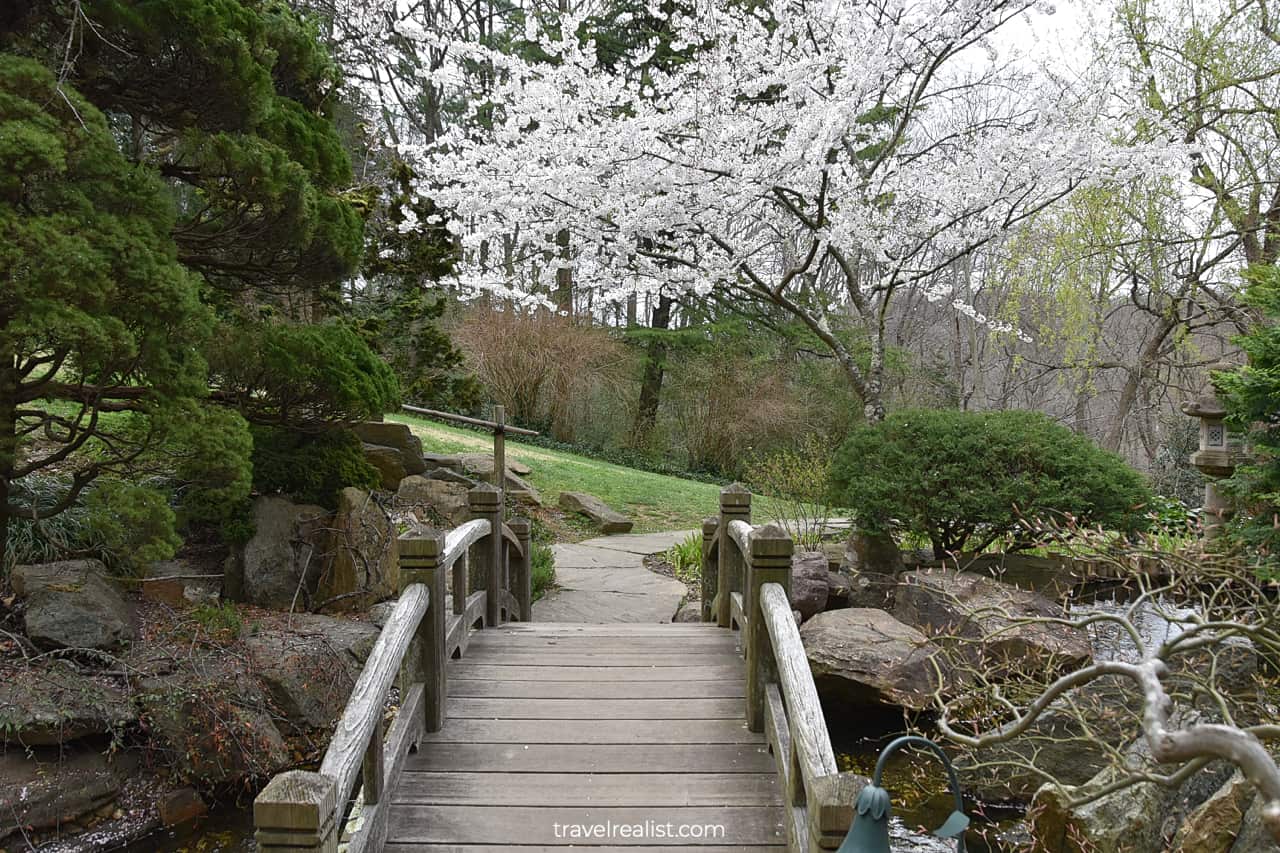
Where to Stay near Hillwood Estate
Hillwood Estate is in a residential area of Washington, D.C. As a result, there are no hotels within a short walk from the museum. You would need to drive or take public transport to nearly all places to stay.
Still, District of Columbia is a major tourist destinations. Countless visitors come to Washington, D.C. to explore the National Mall and see cherry blossom.
The capital of the country is also home to nearly every embassy imaginable. People travel to D.C. to get visas or renew their documents. Large traveller counts result in more places to stay.
You should check out The LINE Hotel DC and Omni Shoreham Hotel. These hotels are the closest places to stay. You could reach the museum on foot (60 min), public transport (30 min), or by car (10 min).
If you are looking for more affordable options, take a look at Lyle DC and Washington Plaza Hotel. Both are further away from the museum. But they are about halfway to the National Mall.
If you do not mind a longer trip, you should consider Bethesda, Maryland, Crystal City, Virginia, and Arlington, Virginia. These communities have plenty of places to stay.
You need to book a place to stay in D.C. as far in advance as possible. This is the only way to beat the crowd and get a good deal.
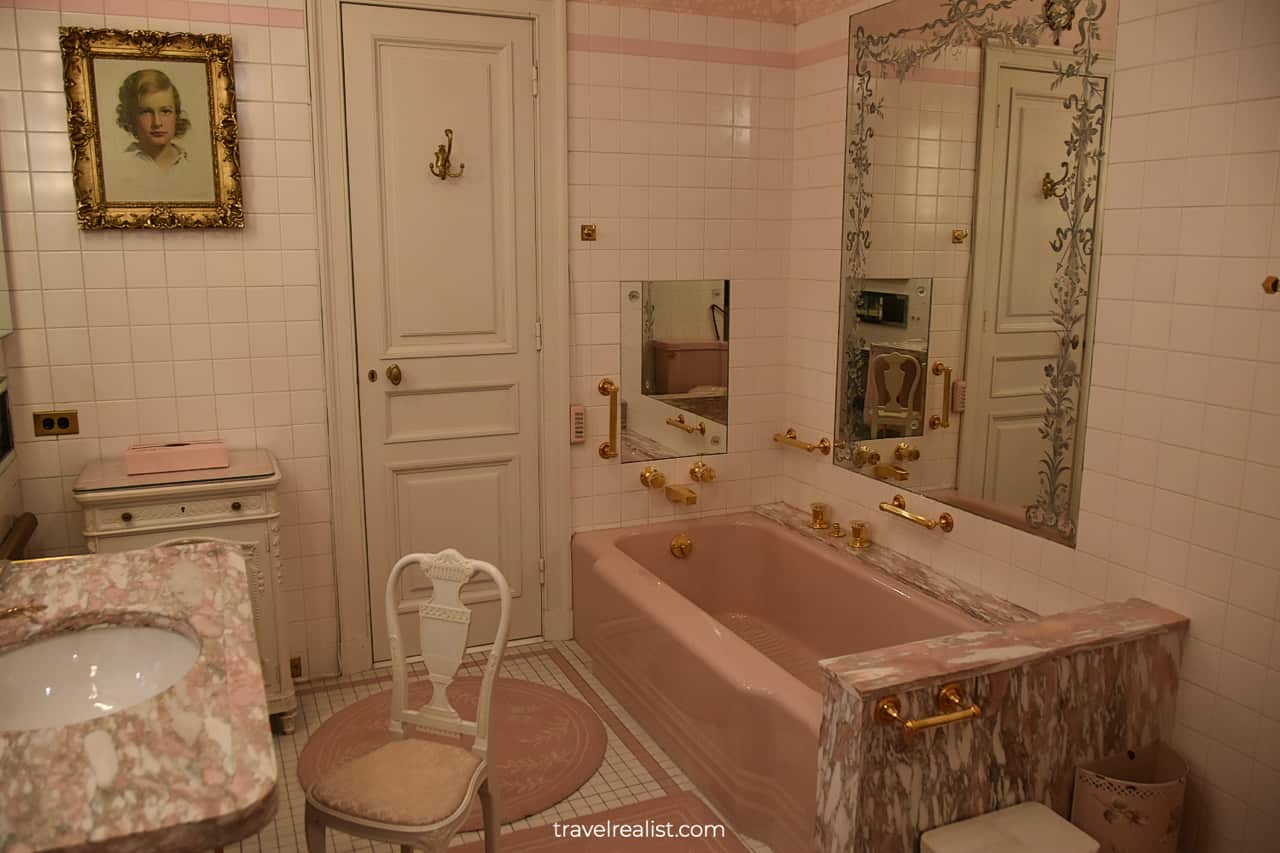
Entrance Requirements & Passes
Hillwood Estate is open from 10 a.m. to 5 p.m. Tuesday to Sunday. While the Estate is open during most of the year, it closes every January. Annual cleaning takes places during a few wintry weeks.
Admission costs $15 per adult. There are discounts for seniors ($14), students ($10), and children. A child between 6 and 18 years could visit for $5. Children under 6 visit free.
This price will give you access to the House Museum and Gardens. You could explore them at your own pace on a self guided tour.
Admission also includes a one-hour guided mansion tour. These tours run at 11:30 a.m. and 1:30 p.m. during museum opening hours. There is an additional guided tour at 3:30 p.m. Friday to Sunday.
Museum staff also runs Garden Tours at 10:30 a.m. and 12:30 p.m. in the spring and fall. These one-hour tours are free but are on a first come, first served basis.
If you travel with a group, you might want to become a Hillwood member. The museum membership costs between $60 and $500 a year. You get free admission and between 4 and 10 free guest passes.
A group of 4 adults would break even on an individual membership on the very first visit. Members get other perks likes discounts at the Museum Shop and Cafe.
You could buy your one-time tickets and membership online. Museum staff would be happy to help you purchase tickets on site, too.
If you choose to visit Rock Creek Park next, it might be also useful to know its admission requirements. You could visit Rock Creek Park for free year round.
Pierce Mill Visitor Center is open from 12 p.m. to 4 p.m. on the weekends. The exhibits are closed during the rest of the week.
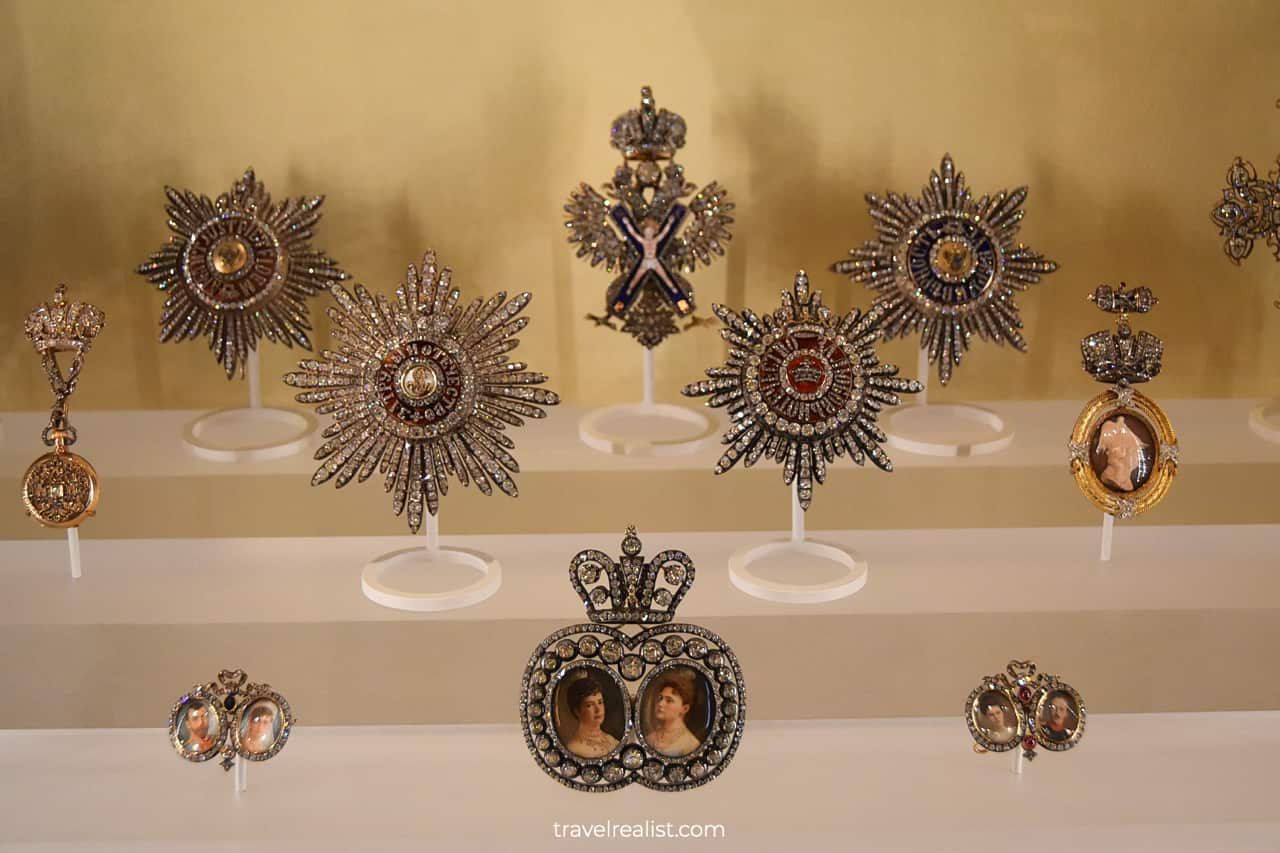
Takeaways: Hillwood Estate Washington, D.C.
Hillwood Estate is an amazing destination in Washington, D.C. This beautiful house museum has an great number of historic items on display.
Fabergé Eggs, gold chalices, and jewelry are just the start of the list. Countless paintings, vintage furniture items, and Porcelain dinnerware sets are also part of the Hillwood Estate collection.
Beautifully restored interiors tell a life story of Ms. Post and her family. You could see a family yacht replica, dresses, and books on display throughout the house.
Hillwood Gardens are in the league of their own. Greenhouse, French Parterre, and Japanese Garden would be a highlight of any park or estate. You could see them all and some more at Hillwood.
Hillwood Estate is one of the best house museums in the United States. There is only one thing to consider. The admission price is on the higher end for most house museums.
Yet, historic items, art pieces, and blooming flowers are well worth the admission price. You should visit Hillwood Estate on your next trip to Washington, D.C.
Take a look at this Hillwood Estate Washington, D.C. Video Guide. And visit the YouTube channel for the latest videos.
Frequently Asked Questions
Hillwood Estate, Museum, and Gardens is in Forest Hills in Northwest Washington, D.C. The house museum is in the residential area of the city. You could reach it by car, subway, or on foot from Rocky Creek Park.
Hillwood Estate is a hidden gem destination in Washington, D.C. There are lots of things to do at Hillwood:
– Visit the 36-room Georgian Colonial mansion.
– Admire Fabergé eggs, jewelry, dinnerware, paintings, and vintage furniture pieces.
– Learn about the life and legacy of Ms. Post.
– Stop by the English Bedroom, French Drawing Room, and Russian Porcelain Room.
– See crowns and chalices at the Russian Sacred Arts Gallery.
– Explore the live orchid collection in the Greenhouse.
– Enjoy a fountain and live ivy fence tunnels in the French Parterre.
– Smell blooming roses in the Rose Garden.
– Cross the pond in the Japanese Garden.
– See special exhibitions at the Dacha or the Adirondack Building.
– Catch a glimpse of the Washington Monument from the Lunar Lawn.
– See the grist mill at work at Pierce Mill in Rock Creek Park.
Hillwood Estate in Washington, D.C. is open from 10 a.m. to 5 p.m. Tuesday to Sunday. January is the exception. The museum closes for three weeks in January for annual cleaning.
Hillwood Estate in Washington, D.C. offers free onsite parking to its visitors.
Hillwood Estate in Washington, D.C. is one of the largest private collections of French and Russian art. You could see paintings, jewelry, and dinnerware in this art and house museum.
The Hillwood Gardens offer an amazing variety of plants and landscapes. Admission price includes both guided and self guided tours.
Safe realist travels!

